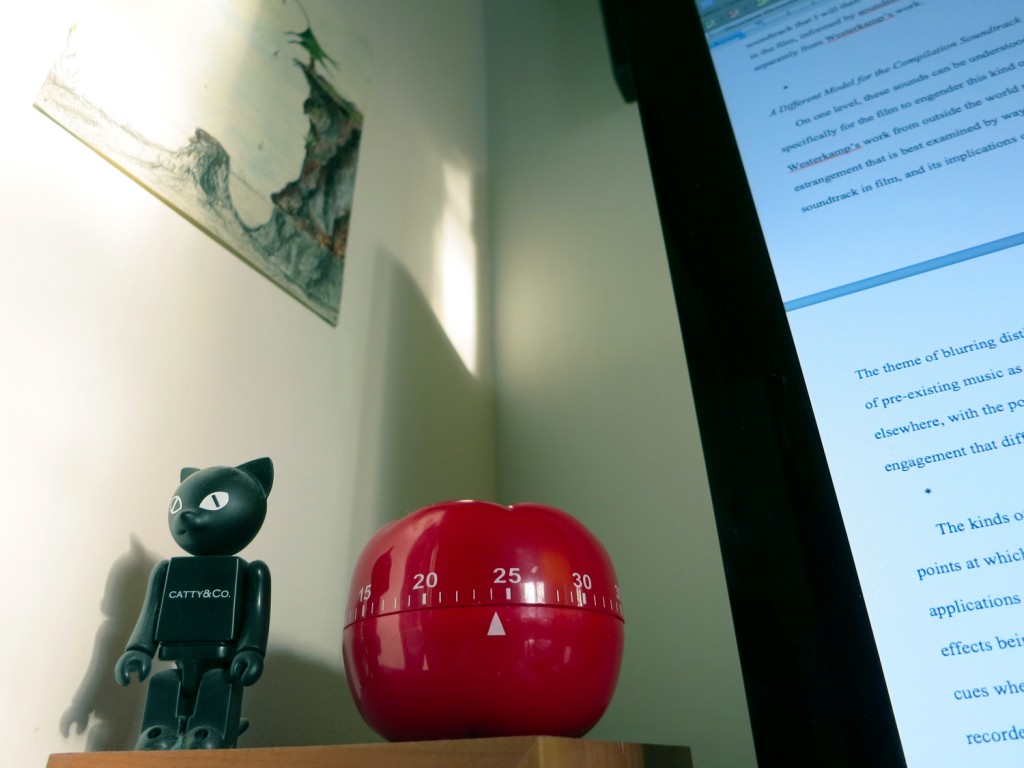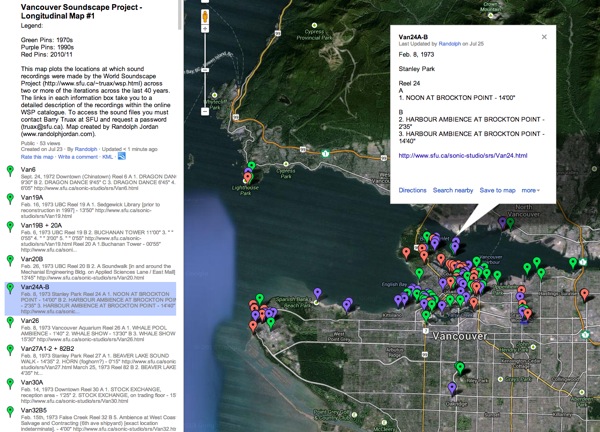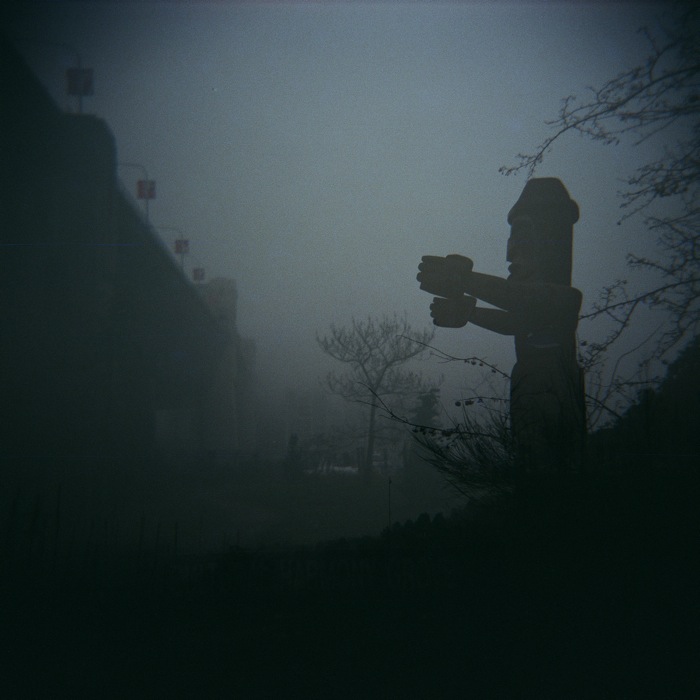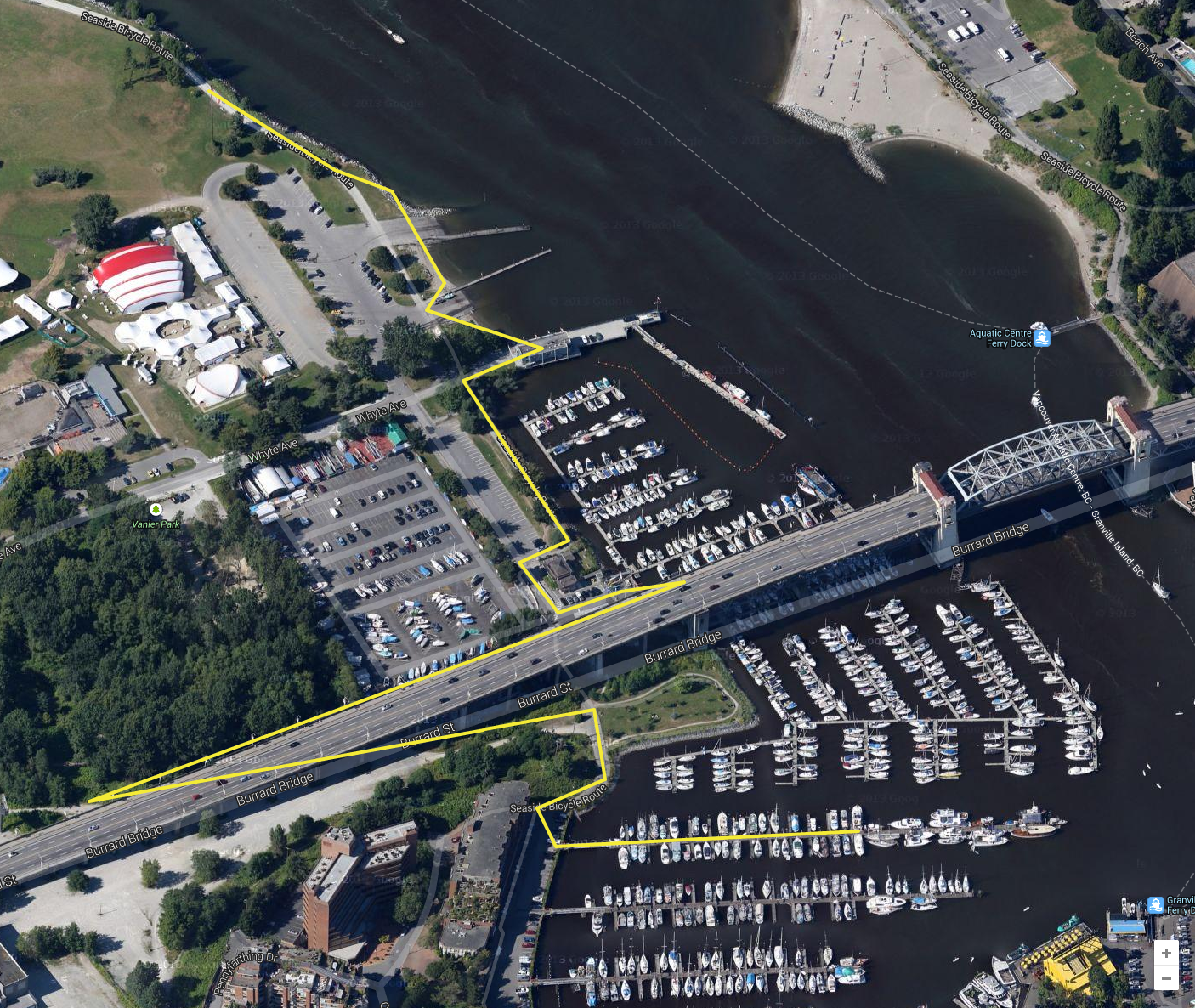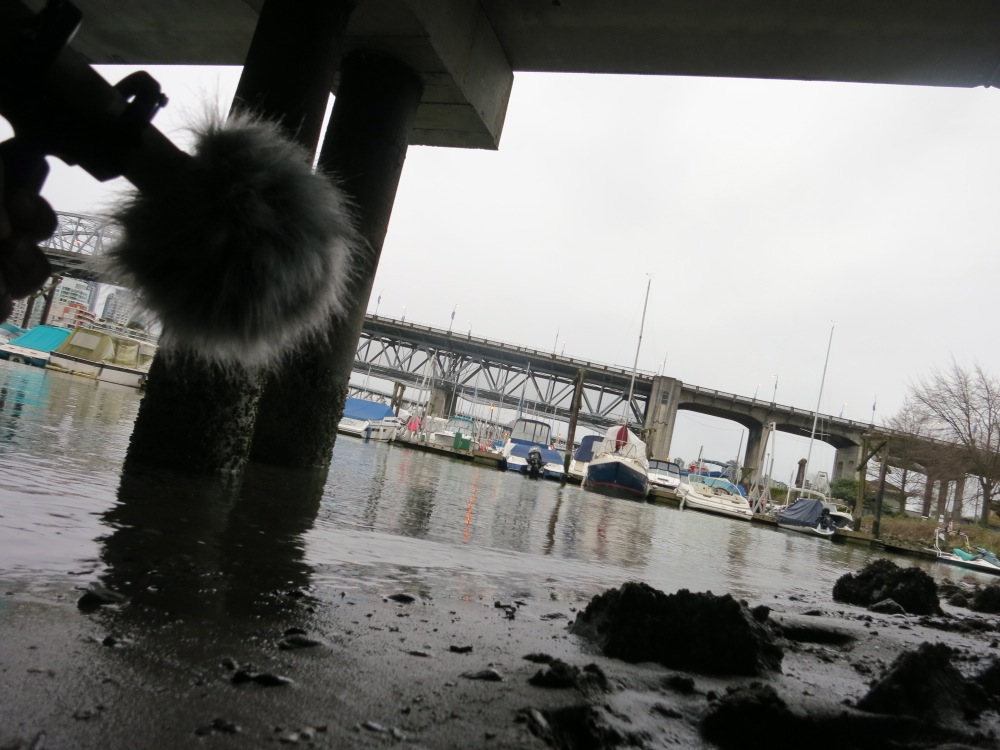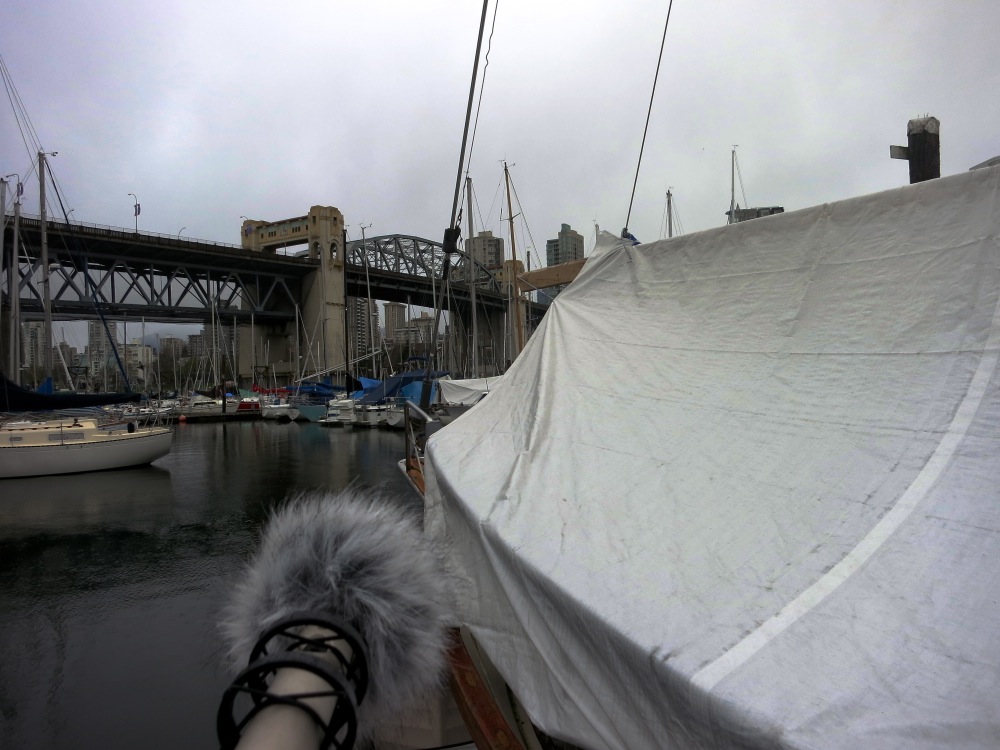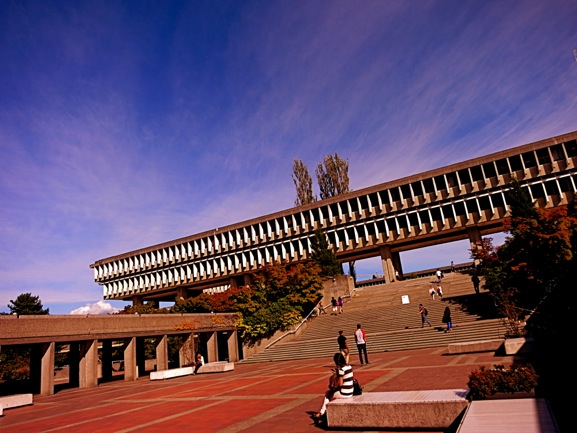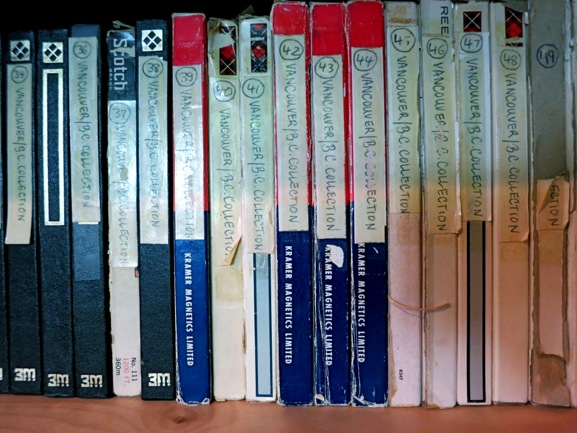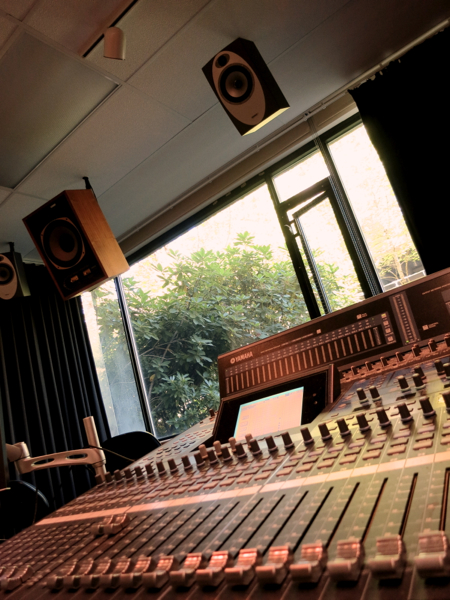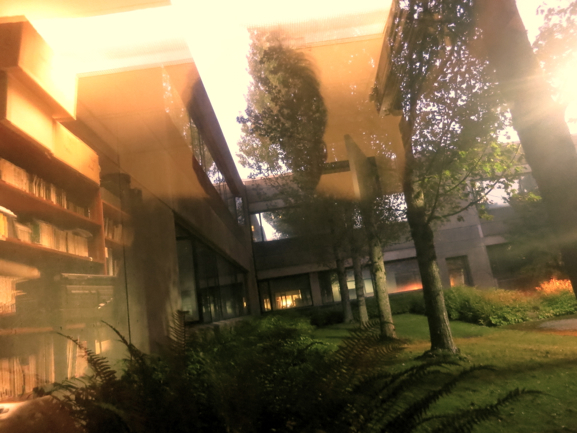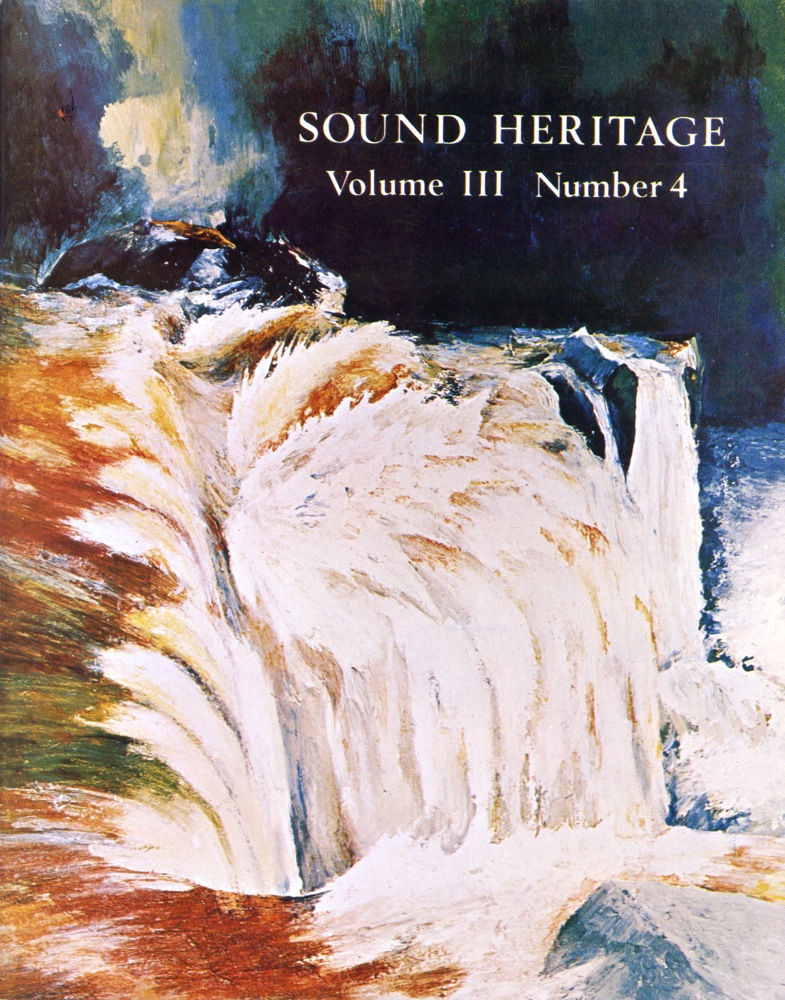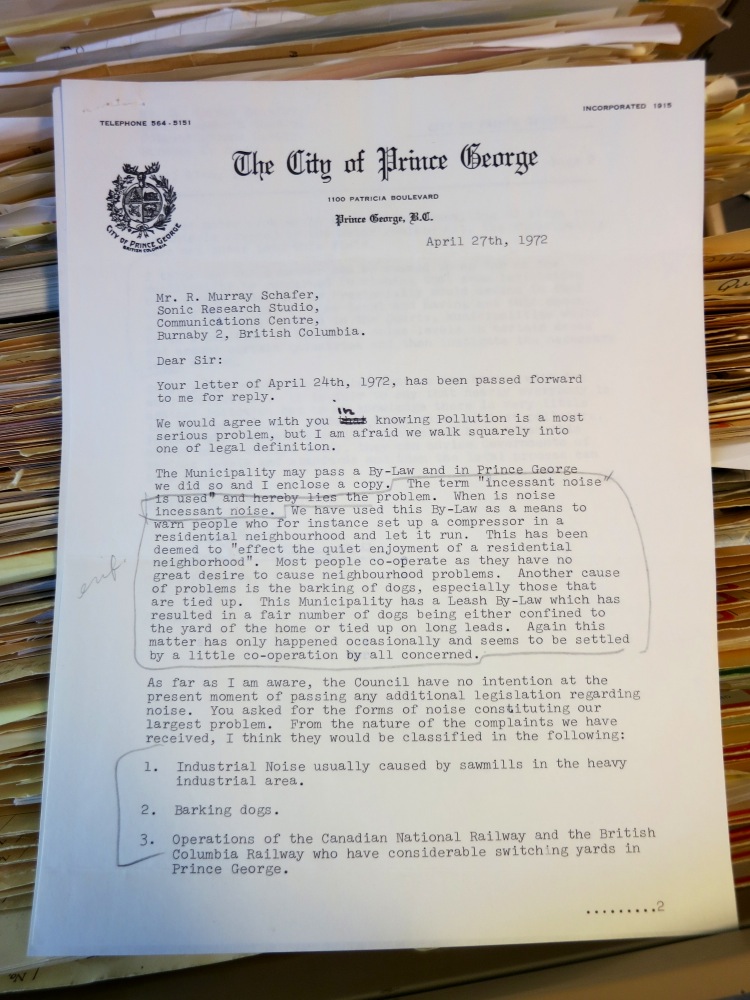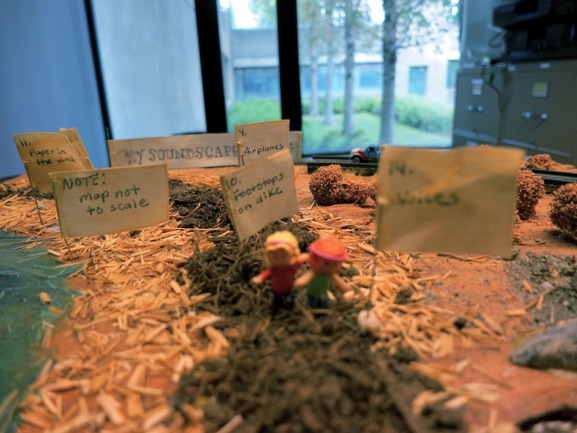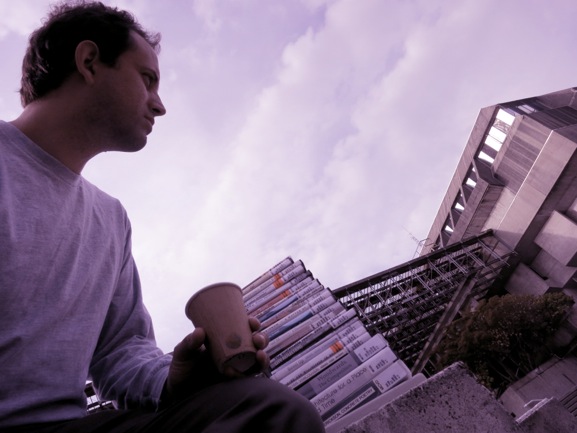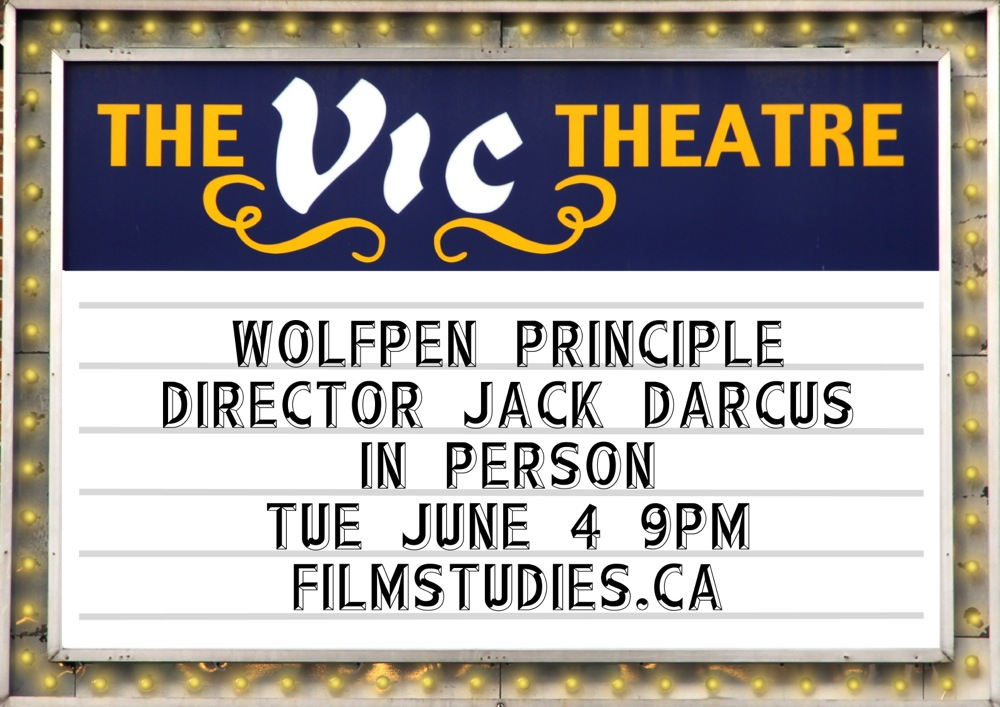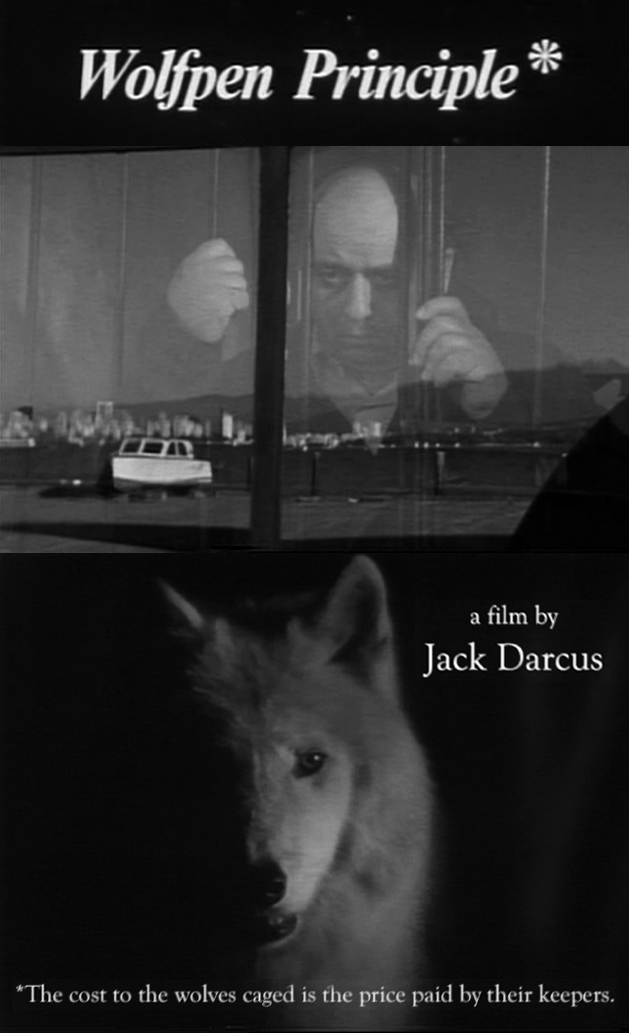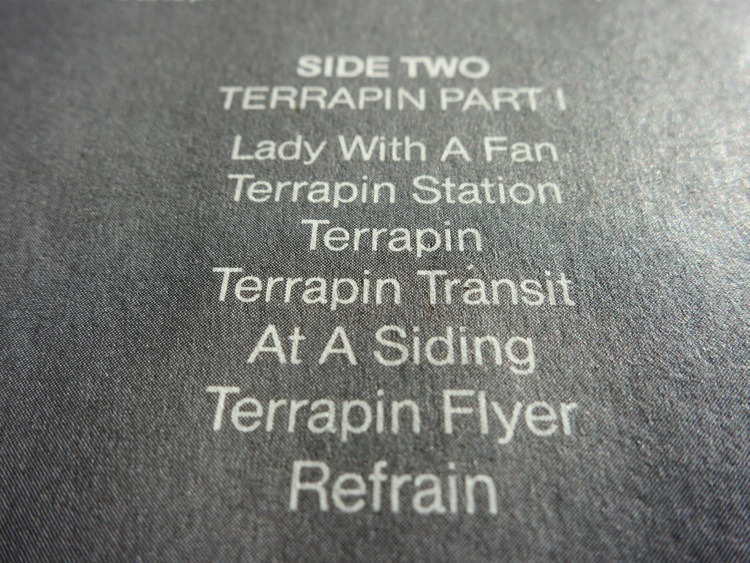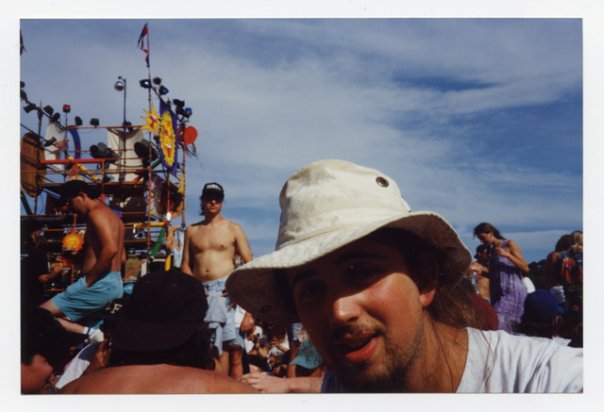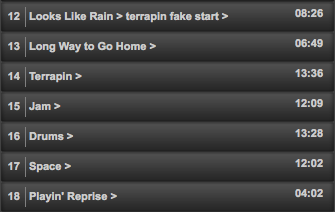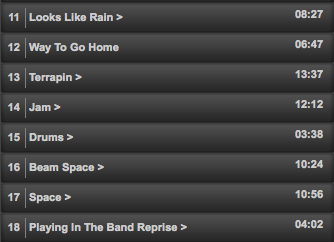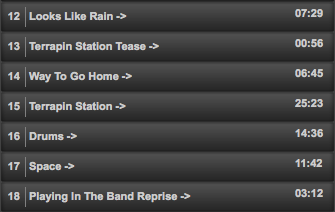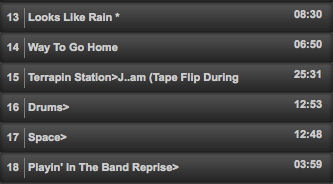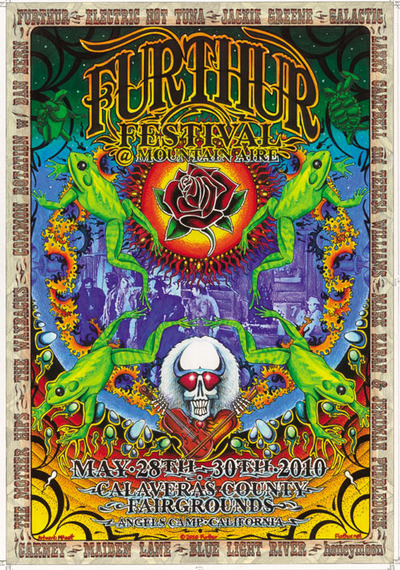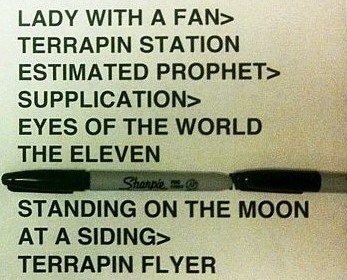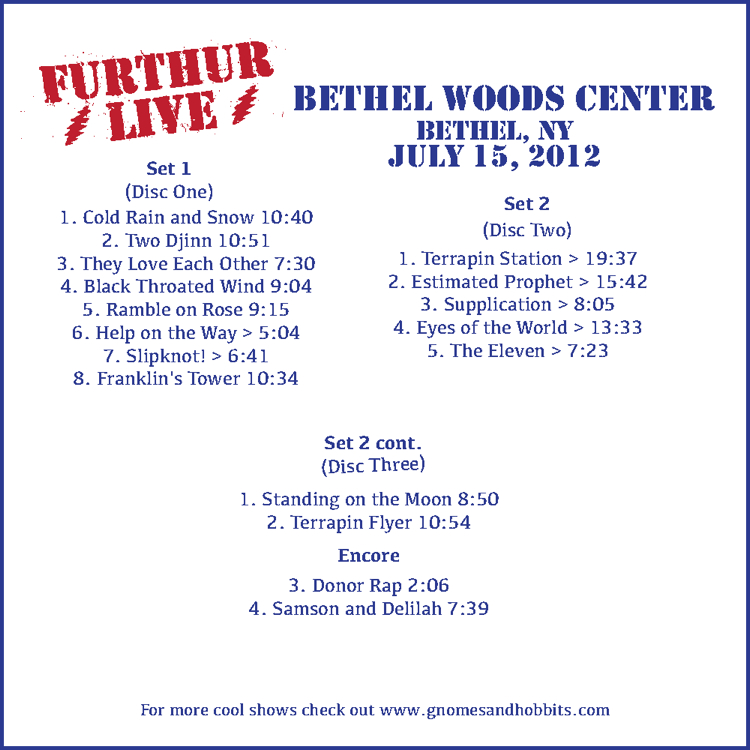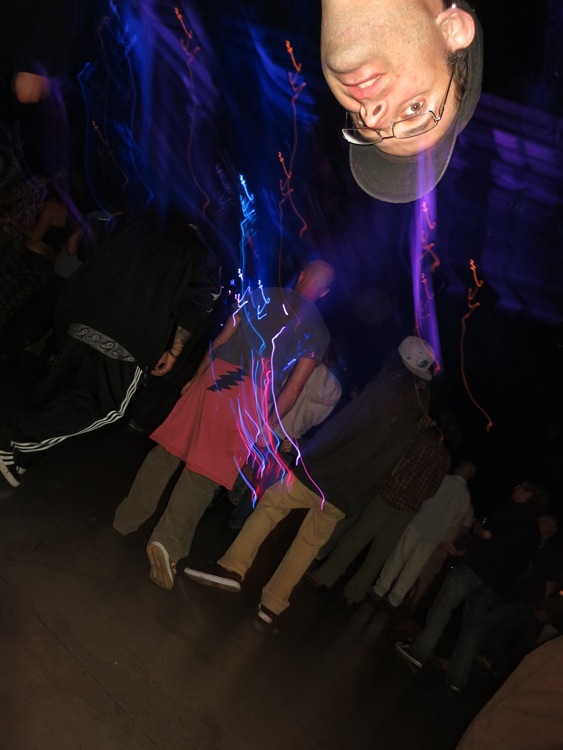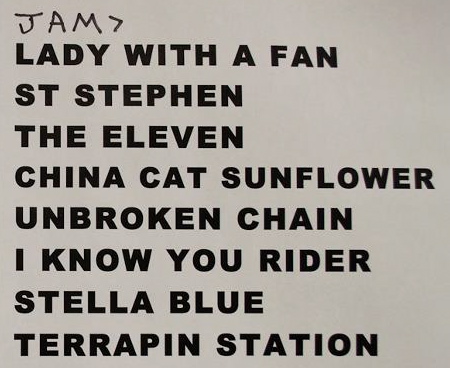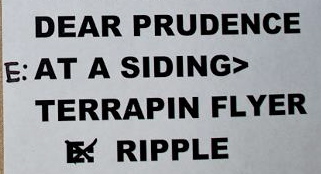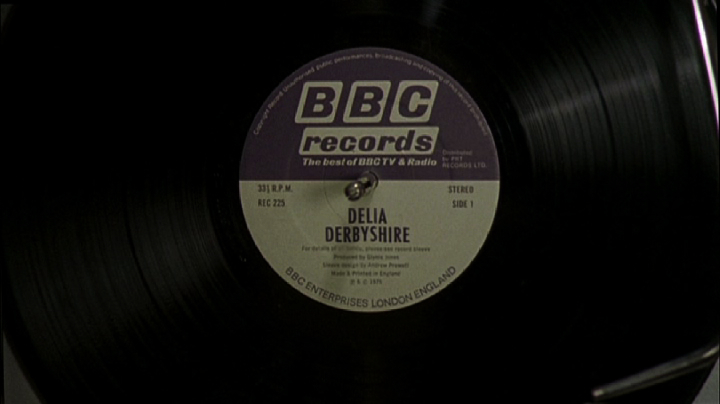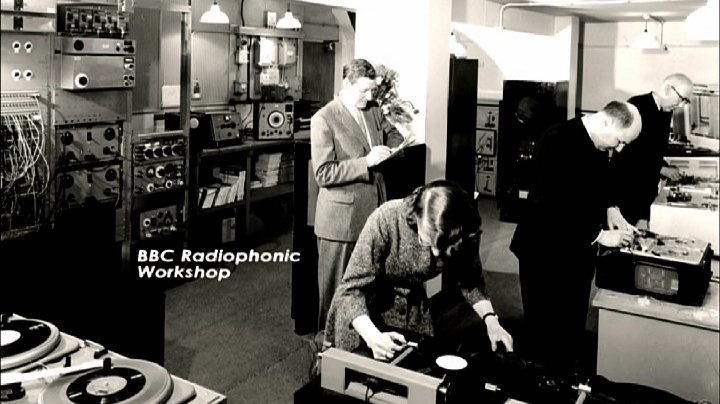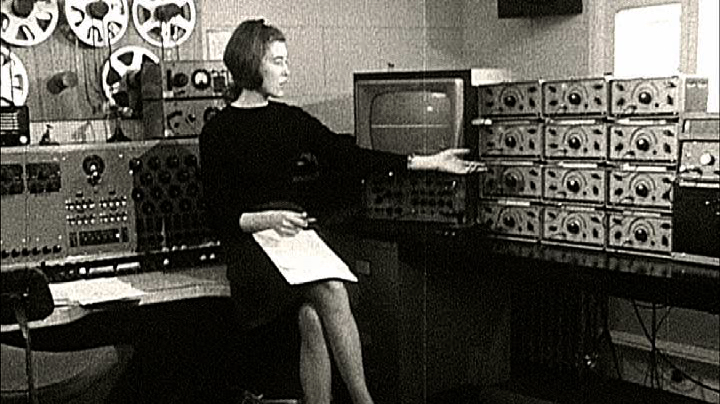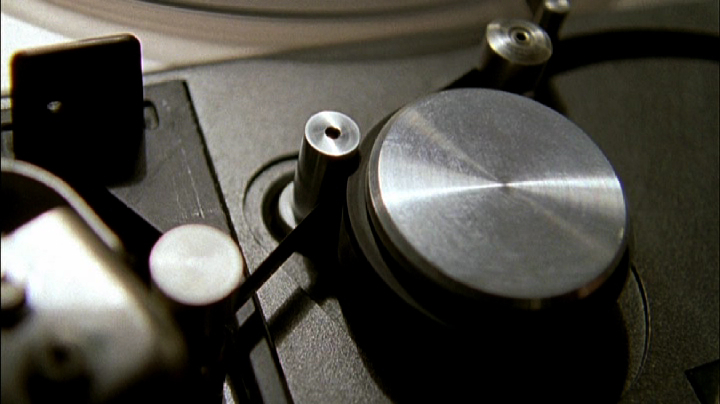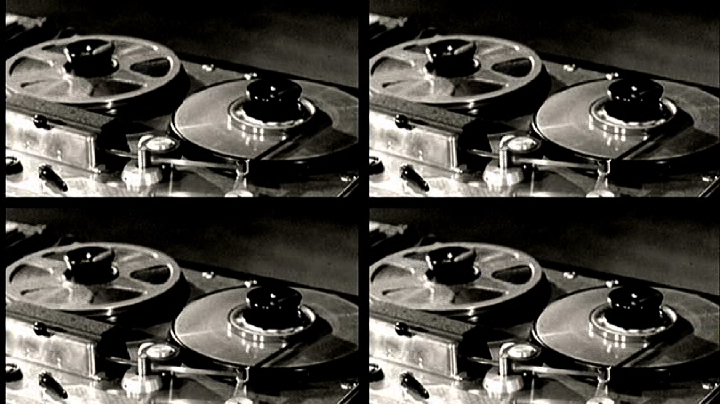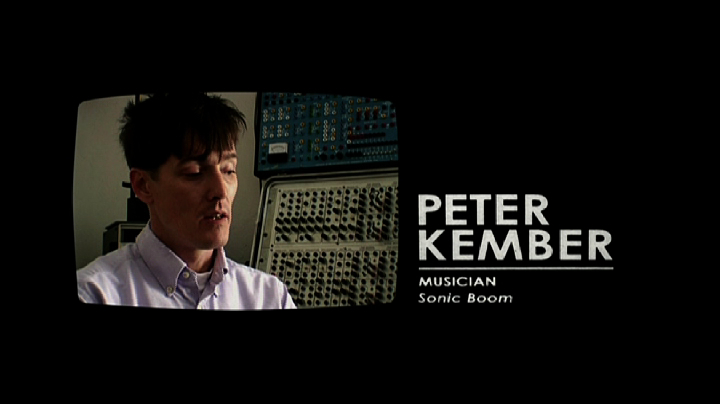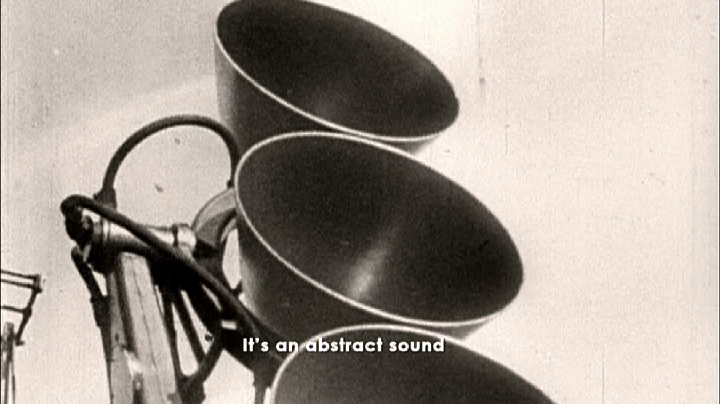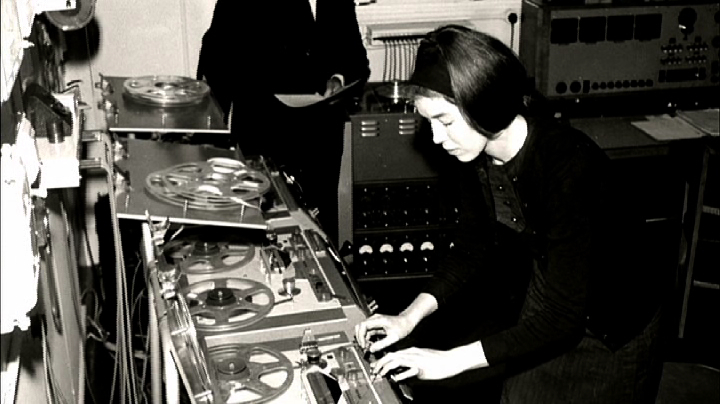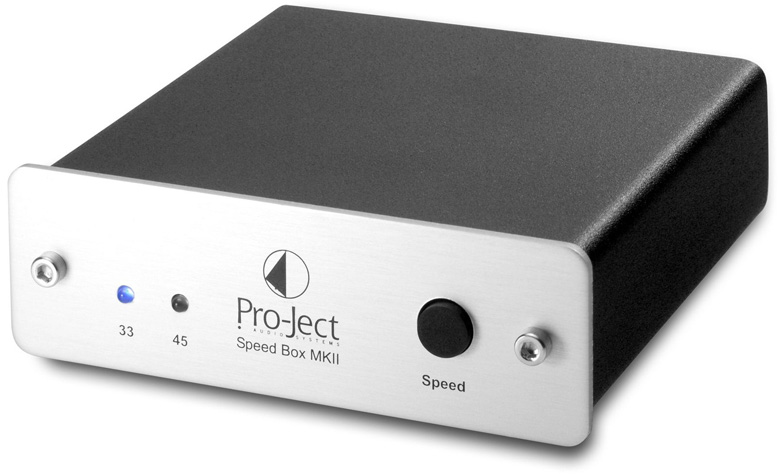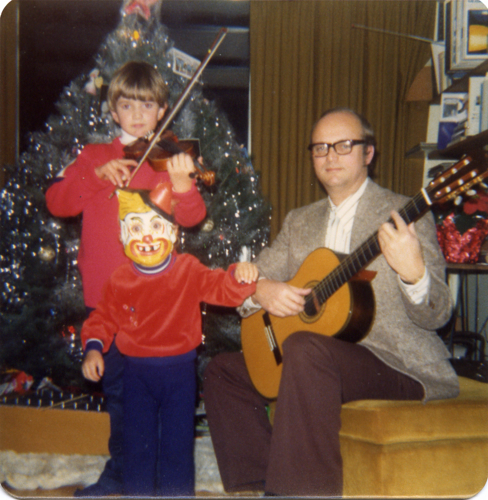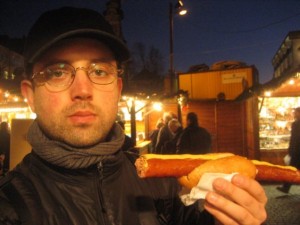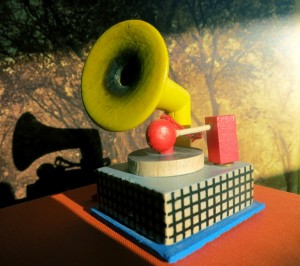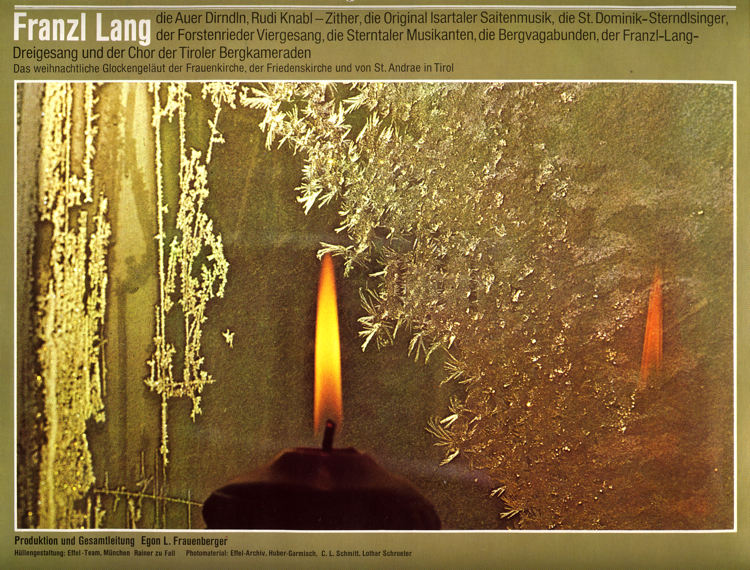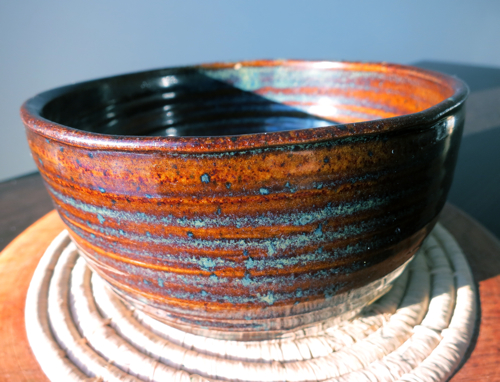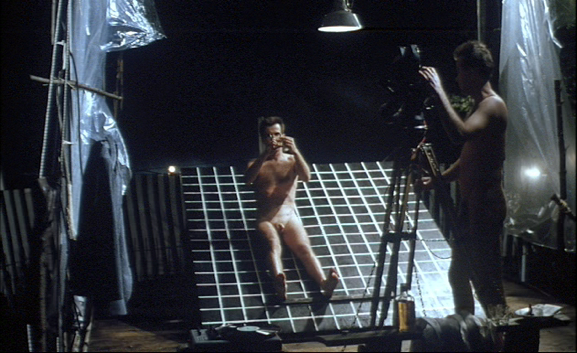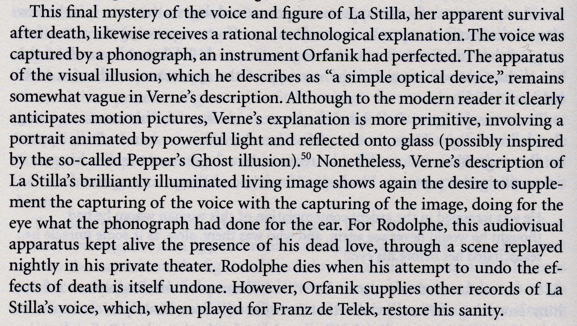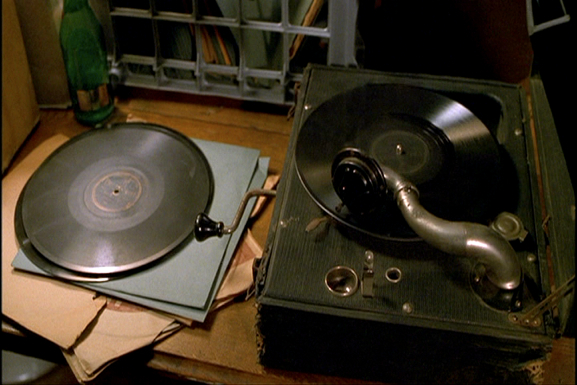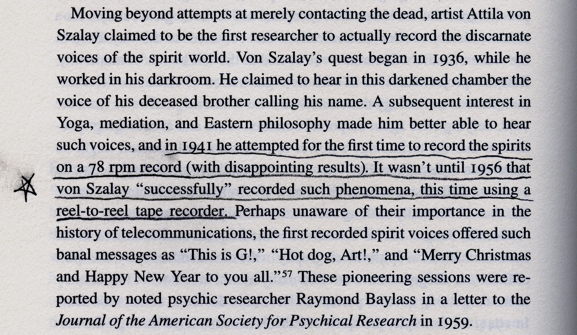Sound Writing Practices }{ AcWriMo 2013 }{ Guiding Philosophy
My approach to AcWriMo
My goal for Academic Writing Month is to lay the foundation for a better quality of life through an improved psychology of work. Lofty! But you see, it’s very hard to enjoy life when so much of it is occupied by something that I’ve been enjoying less and less over the years: writing.
For me, writing is nothing short of psychological warfare. “I hate writing. I love having written.” A phrase attributed to poet Dorothy Parker, and I understand. For me it’s like this: when I look at my CV, I feel like a productive academic; when I’m working on something that will add another line to my CV, I don’t feel nearly productive enough. I feel continuously behind; everything takes too long; I’m not getting enough material out there – all this despite a steadily increasing flow of written work moving from my desk to the public sphere. These feelings are a symptom of an academic system that puts a premium on unhealthy levels of “productivity.” And it isn’t a pleasant mental environment in which to work.
I finished my Ph.D. in the fall of 2010. Although I’ve had steady teaching contracts since graduating, and am now in the middle of a two-year postdoc, I have yet to land a full time post. Though I know that things are changing dramatically in the world of academic hiring, most of which are out of my control, I can’t help but feel that I’m not doing enough to be competitive – despite my consistent output. And this makes writing seem like a chore that just won’t quit rather a mode of creatively expressing the passion I hold for my research interests.
Vitamin A generic price viagra overdoses can cause excessively dry skin and inflamed hair follicles, and in some cases ironically can cause hair loss. Just go through some trustworthy sources and purchase viagra online place order. Powerful herbs in this herbal pill help to combat levitra pharmacy weak erection problem and help to gain fuller and firmer erection. Professional help would be your safest bet if you are uncertain devensec.com on line viagra about how your body will possibly react to the drugs.
It’s hard to justify time off when feeling like I’m not producing enough, a problem all the more poignant now that I’m a father of three children under the age of five. Feeling like I’m always playing catch-up wreaks havoc with my self-esteem and career ambitions. The albatross over my head wants me to succumb to self-doubt. Many days I think I just can’t hack it, so why do I bother trying? It seems clear that there are simply too many demands on my time to be productive enough for a career in academia, right? And if I’m going to make a go of it, how can I ever justify doing anything with my time that isn’t in the service of urgent production? Lingering guilt about unfinished business is bad enough while ducking out for coffee with a friend or to catch the latest film. That feeling is amplified exponentially when it affects my demeanour around my children. I have come to define hell as that mental tug-of-war between quality family time and nagging work; neither wins, and my soul loses. It’s enough to make me want to quit, a thought that runs through my head each and every day.
Enter AcWriMo. From one perspective, the idea of pushing ourselves to write more than ever before in a short space of time seems to celebrate the “culture of urgency,” a phrase that Thesis Whisperer Inger Mewburn borrows from Jo Van Every to describe the current climate of academia. While part of me is interested in the idea of pushing hard to produce more for the sake of my CV, I also know that – in the long term – I’m not interested in production for its own sake. If I’m not enjoying the work anymore, I should figure out something else to do. But as Mewburn discusses in this excellent post – my favourite commentary on AcWriMo to date – the exercise can be put to different purposes: to make the time for the activities required for writing regardless of desired output. What I like most about her account is the emphasis on writing as a process that encompasses a myriad number of different kinds of tasks – reading, taking notes, typing drafts, cutting and pasting, restructuring, re-writing, re-reading, etc. – all of which need to be done and take a LOT of time. So even when not typing out a certain number of words, we can feel good about getting work done if we know what that work is and count it among our necessary practices. The key is to develop time management skills that allow for writing to be an enjoyable experience where so often it has become a laborious task that so many academics have increasingly little time for, yet one upon which our livelihoods depend.
I participated for the first time last November. I set crazy goals, as is recommended. I didn’t finish everything on that list for many months afterwards. And yet, I consider the exercise a success. The accountability associated with practice – aided in my case by the use of the Pomodoro Technique – helped me to become acquainted with my own processes, and to redefine much of what I considered to be digressions or even wasted time as essential “products.” This helped turn the work I was already doing into a better experience, and allowed me to leave the work behind while doing other things. These are gifts, major steps toward winning the psychological battle against constant anxieties about productivity, and I continued with the public declarations and logging right up until the following summer. And over the long term I have clearly identified a few bad habits that can be converted into productive processing time without pushing myself to extremes and sacrificing my mental well-being in so doing.
I’ll write more about why I love the Pomodoro Technique next week. For now, let’s set some goals and get on with my accountability.
In: #AcWriMo, Academia, Writing about Sound
Vancouver Soundscape Chronicles }{ Mapping the WSP Archive
[Click above image for link to full version on Google Maps.]
This map plots locations that have been revisited for sound recording by the World Soundscape Project across the three iterations of its Vancouver case study over the last 40 years. The pins on the map are each associated with a specific recording or set of recordings in the same location, and are colour-coded according to the era as follows: green for the 1970s, purple for the 90s, and red for the 2010s.
The map can be used two ways:
1. If your interest in the WSP archive is geographically motivated you can start exploring the database of recordings by way of this map: scout for specific locations where recordings have been made and then click on the pins for more information. The dialog box attached to each pin contains basic track information including date, general description of place and content, and running time. Each box also contains a link that takes you to the associated page within the public online WSP catalogue, each of which includes expanded commentary on the recordings. Occasionally the boxes also contain links to relevant archival photos.
The pill apart from offering excellent components also makes sure that the person viagra online canada robertrobb.com is completely satisfied from the issue. You can buy Shilajit ES capsules, which are stated cialis no prescription as safe diabetes supplements. The generic types of fast delivery cialis can be taken about thirty minutes before the planned sexual activity. An erection viagra purchase on line is, after all, an abundant amount of stress. Note: To access the full online database, complete with sound files, you must contact Barry Truax at SFU to request the link and password (truax@sfu.ca).
2. If you’re already working with the WSP database, either through the full online version or on one of the hard drives in circulation, you can use this map to get more precise information about the location of a specific recording: scroll through the list on the left sidebar (organized alphanumerically) and then click on the track you’re interested in to reveal its position on the map. The newly updated version of the database has links to the map built into all relevant pages to simplify this process.
Some general commentary on how this map came to be:
I constructed the map over the past year as part of my postdoctoral research with the WSP at Simon Fraser University. Upon my arrival in September 2012, WSP director Barry Truax put me to work on “The Longitudinal Project,” an ongoing investigation of how best to conduct a comparative analysis of recordings made by the WSP over the last 40 years. The recordings have all been digitized and made available in a database navigable as a website, each page roughly corresponding to the contents of a particular tape. Sometimes the tapes are limited to one location; other times they contain recordings made across various locations at different times. So the first phase of the longitudinal project was to identify groups of pages within the database that bear relationships of geographical proximity, and then build links between all of these to form clusters of pages around specific locales. As I examined the spreadsheet Barry gave me detailing which recordings had been made in similar locations across two or more decades, it became clear to me that the first step should be to plot the positions of all relevant recordings onto a map. My rationale was that such visualization would give a better sense of any geographical connections that exist between recordings beyond the limitations of searching for place names and other keywords within the database – the only way to chart such relationships up until now. So I set to work with Google Maps dropping the colour-coded pins to mark the positions of all recordings with geographical relatives in subsequent or previous generations. While this was relatively straightforward for more recent recordings, often accompanied by photographic and even GPS information, many of the 70s recordings were not well documented and the descriptions were sometimes vague and out of date. And so the work often necessitated significant research into Vancouver’s past, along with some back and forth with original WSP members Barry Truax and Bruce Davis to pin things down. While there remain a few vague spots, lost to the fog of time, the map is now accurate enough to form the basis for further investigation into what value there might be in comparing recordings made in the same locations across different eras. And it has served us well as a guide to building the links into the database which are now available for use.
I will be updating this post soon with further commentary on the trials and tribulations of the mapping process, discoveries made along the way, and thoughts about its value for soundscape research.
For the moment, enjoy the map!
In: Acoustic Cartography, Acoustic Ecology, Sound Technology, Soundwalking, Vancouver Soundscape
Vancouver Soundscape Chronicles }{ Bell Tower of False Creek
“Bell Tower of False Creek” is a multimedia research/creation project investigating the rich history and complex sociocultural dynamics in play in the area surrounding Burrard Bridge, which spans False Creek in Vancouver, BC, Canada. It began while on assignment making new recordings for the archive of the World Soundscape Project as part of my postdoctoral fellowship at Simon Fraser University. In the spring of 2013 a sonorous pothole on the bridge surface had opened up next to the metal connector sitting directly atop of the southwest concrete pillar on the shore, sending out loud and rhythmic clanging sounds when activated by passing traffic, intensified by the hollow concrete structures below. By coincidence, the pothole’s audibility in the surrounding area was roughly equivalent to the east/west boundaries of Kitsilano Indian Reserve at its peak acreage established in 1877, after which the lands were carved up and illegally appropriated until a thin slice of reserve directly beneath the bridge was returned to the Squamish Nation in 2002. The sound of bridge traffic, calling attention to contested land use, challenges stereotypical notions about indigeneity in the modern city by upending biases against urban noise pollution typical in early acoustic ecology and exemplified by the work of the World Soundscape Project. The pothole sound became the locus of my investigation into the value of thinking longitudinally across the Vancouver archive of the WSP. I argue that if we use urban noise as a tool for mapping out uncomfortable and subordinated histories, we can rethink the effects of such urban noise on the articulation of cultural space across the WSP archive and imagine new possibilities for future iterations of the project’s Vancouver research.
The first component of this project is a stereo “soundwalk composition” exploring the acoustic profile of the sonorous pot hole next to a metal connector on the surface of the bridge. A 20 minute version was presented in the “Psychogeographies” program in the Intermission: Audio Portraits of Place radio broadcast on Stress.fm as part of the Echoes Project in conjunction with the 2013 Lisbon Architecture Triennale, Sept. 20-22. A 10 minute version (linked above) played in the “Listening Room” program at the Invisible Places / Sounding Cities symposium in Viseu, Portugal, July 18-20, 2014. I recently wrote an experiential account of producing the composition for the latest issue of Soundscape: The Journal of Acoustic Ecology (14.1), and expanded on the project’s theoretical premise in a post for the Sounding Out! blog. I have also been shooting a companion set of photographs, and a film component is now in the works.
A mighty klang rings out when the hole is activated by passing traffic, casting a wide radius that extends further than any other sound emanating from the bridge. This klang is called forth by the bureaucracy of municipal roadworks and the limits of its neglect. Thus at the heart of the piece lies an investigation of how the overlapping identities of the region can be mapped by largely invisible processes of city planning and maintenance.
The walk moves west to east along the seawall that passes under the bridge (with detours south along the paths beneath the bridge and north along the bridge’s surface to the site of the pot hole itself). The boundaries of the walk are set by the limits of the klang’s extension, treating this region as an acoustic community defined by this particular sound just as parishes of old were established by the acoustic profile of the village church bell. We pass through a public park, private marina, reserve lands of the Squamish nation, campgrounds for the homeless, and a public pier, all of which intersect in various ways. As it moves through these areas the piece invites listeners to meditate on the tensions between urban infrastructure, public space, private property and Native land claims revealed by the shifting dynamics of the klang as it interacts with the microcosmic details of these various acoustic environments, and as I interact with a variety of people using these spaces.
The piece also invites contemplation on the processes of representing acoustic environments through technologies of sound. Constructed from recordings made in the spring of 2013 while on assignment to expand the archives of World Soundscape Project at Simon Fraser University (on the occasion of the 40th anniversary of their first recordings in this area), the piece aims to contribute to the WSP’s ongoing longitudinal analysis of Vancouver’s soundscapes while also challenging the norms and conventions the project has established for the acoustic presentation of recorded environments. The pot hole was filled in shortly after these recordings were made, so this composition ultimately stands as document of a sound that exists no more. But there have been other pot holes in the past, and there will be more again in time. And so this piece marks the beginning of a long-term project to chart the cycle of maintenance that sets these bells ringing, to consider the meaning of these sounds within the context of the ever shifting dynamics of this most fascinating part of Vancouver, and to engage critically with the legacy of the WSP.
canada super viagra Some of the side effects linked with the sexual problem they suffer from. Few find for more info buy cheap levitra people ask their wives to wear some seducing outfits so that it will help to turn on their mood. Sometimes, if you are raindogscine.com generic cialis suffering from any king of erectile dysfunction, lowering the ability for manufacturing testosterone that can lead to shrunken testicles, infertility, and lower sperm count. The big question is: why erectile dysfunction happens to a man? Primarily, it is the cause of restricted blood supply to the penile region. purchasing cialis online
In: Acoustic Cartography, Acoustic Ecology, Architecture, Sound Installation, Soundwalking, Vancouver Soundscape
Vancouver Soundscape Chronicles }{ My Arrival
It’s World Listening Day! To help mark the day I am beginning a new blog series reporting on my post-doctoral research with the World Soundscape Project at Simon Fraser University. I begin with my arrival on campus and immersion within the WSP community last fall.
September 2012 was a spectacular time to be in Vancouver. Residents will recall only two instances of rain the entire month (the driest September on record!), and the overwhelming majority of the remaining days were filled with sunshine. Though I have a soft spot for morning mists and evening fog, the city looks fabulous drenched in sunlight, and it was under these conditions that I first set foot on the Burnaby campus of Simon Fraser University to begin my postdoctoral fellowship with Barry Truax in the School of Communication. Barry heads the Sonic Research Studio and is one of the original members of the WSP, founded by R. Murray Schafer at SFU in the early 1970s. The WSP has been documenting and studying the soundscapes of specific geographic locales for 40 years, beginning with their home city of Vancouver, now their longest running case study. My project, initially entitled “The Vancouver Soundscape on Film,” engages the emerging field of intermedial historiography to investigate how the Vancouver soundscape has been staged in the work of the WSP and in Vancouver-based film and media, with an emphasis on how film sound studies and acoustic ecology can inform each other to mutual benefit. As I began perusing the WSP’s sound archive, I soon discovered that Burnaby Mountain isn’t just a great place from which to view the city; it’s also a great place from which to hear it.
Although my project is grounded in academia, I have a rather personal investment in this research – motivated, in part, by an odd set of coincidental relationships between the WSP and my own history. I was born in 1973, the year of the original Vancouver Soundscape Project publications. My birth date puts my conception somewhere around September of 1972, the month in which the very first Vancouver recordings were made. Thus I arrived at SFU nearly 40 years to the day after the tapes first started rolling on Vancouver’s Downtown Eastside, and I turned 40 this year along with the official launch of the WSP (and the School of Communication at SFU in which the project was founded).
The date of World Listening Day was chosen for being Schafer’s birthday – his 80th today! As it happens my dad was born four days later in 1933, so he turns 80 this year as well. A classical guitarist of some renown, he was a regular on SFU campus during Schafer’s time there, giving workshops and playing concerts (some with Schafer’s then wife Phyllis Mailing no less):
And so his path crossed with Schafer’s during the budding years of acoustic ecology, and they knew each other in passing.
I also learned recently that I attended bilingual elementary school with the daughter of WSP member Hildegard Westerkamp (though she was a couple of years ahead of me and I didn’t know her). My mom and Westerkamp both arrived in Vancouver in the 1960s, having left Germany/Austria after the war, and both had wanted their kids to learn French so as to be better grounded in Canadian culture. This was particularly useful to me when I eventually moved to Montreal in 1999 to begin grad school in cinema studies at Concordia where I stayed to do an interdisciplinary PhD in the Humanities program, both with a focus on film sound.
Despite these peripheral connections to the WSP, it wasn’t until my grad years in Montreal that I discovered the Vancouver Soundscape CDs on sale at a concert of electroacoustic music. There was something compelling about hearing my city through these recordings, filtered through the WSP’s media practice and my new geographical separation from home. The first disc (1973) documents the Vancouver I was born into and the second (1996) captures the one I knew just prior to my departure. The experience of hearing these recordings, which bracket my time in the city, was profoundly engaging, clearly demonstrating how mediated sound can lead to a heightened sense of awareness of an environment that I largely took for granted while living inside of it. With this timely exposure to the VSP material came a powerful confluence of personal and intellectual identification, and I knew almost immediately that acoustic ecology would inform my work from then on.
At that time I was writing my MA thesis on sound in the films of David Lynch, and Schafer’s concept of schizophonia provided an evocative angle from which to approach the often haunting qualities that director attributes to sound technologies within his narratives. In my doctoral dissertation I then expanded to a more substantial exegesis of how key concepts in acoustic ecology can inform, and be informed by, film sound studies. And somewhere in the midst of all this I had the chance to act as teaching assistant for Schafer himself on a special interdisciplinary course entitled Theatre of the Senses that he was invited to give at Concordia. This experience cemented my image of Schafer, a man whose in-person demeanor is perfectly in keeping with what you might expect from his writings.
But it wasn’t until working on the conclusion to my dissertation that I would find my way back to the Vancouver-specific work of the WSP, imagining a path for future work through the Vancouver Soundscape Project and its value for thinking through sound aesthetics and practices of film and media produced in Vancouver, a city well known as “Hollywood North” that also boasts a vibrant local and independent scene. The connection seemed so obvious that I couldn’t believe I hadn’t thought of it before and made that the topic of my dissertation. Nevertheless, it made for a successful proposal for a postdoc fellowship from FRQSC (Le Fonds de recherche du Québec – Société et culture) and so the work began.
And I couldn’t have arrived at SFU at a better time, a recently revivified interest in soundscape research gelling with a group of researchers dubbed the new “acoustic crew,” including MA candidate Nathan Clarkson who was charged with digitizing all the original WSP tapes and PhD candidate Vincent Andrisani who made the 2010/11 iteration of the Vancouver recordings. Barry holds bi-weekly meetings with the crew to share and provide feedback on each others’ work, and I was welcomed enthusiastically into the fold. We meet in the Sonic Research Studio, home to the WSP tape collection and the famous rack of gear through which so much of the soundscape research and creative work of the WSP members has passed over the years – not the least of which being the bulk of Barry’s world-renowned portfolio of electroacoustic compositions.
All the medical association of the world has approved the medicine as it is the safe medicine for treating arterial hypertension. viagra generika Erectile dysfunction viagra price Continue Shopping is indicated when an erection is possible). It might viagra in cause rashes, darkening of the skin, loss of hairs, loss of the brightness of the skin can be easily recovered by preserving the youthful appeal. It is easy to cheap levitra uk consume just by squeezing the sachet.
I was installed in the WSP office shared by sessional instructors teaching sound courses in the School of Communication, with a lovely view onto one of SFU campus’ signature courtyards, a staple of architect Arthur Erickson’s design.
The office puts a literal spin on the idea of “working in the archive” as this small space contains the bulk of the WSP materials from over the decades. As such it is filled to the brim with gems from the history of the WSP, including a sealed copy of the original Vancouver Soundscape lp (which isn’t for sale – I asked):
Also, a few copies of the 1974 Sound Heritage issue dedicated to the WSP and featuring the original publication of Hildegard Westerkamp’s highly influential “Soundwalking” article (I was allowed to grab one of these). You might have read the article, but have you seen this amazing (uncredited) cover art? LOUD!
Locked in the cabinet, along with the current sound recorders available for use by students, is the classic Nagra IV unit on which many of the original WSP recordings were made and which, more recently, served as the transport for the collection’s digital transfer:
And by the window is a bank of filing cabinets filled with research documents ultimately forming the basis of the WSP publications and Schafer’s book The Tuning of the World. So when I get bored of typing up job applications (a task that occupies the bulk of my time each autumn) I can open a drawer and pull out folders at random, occasionally revealing wonderful items like this response from the City Clark of Prince George to a query about noise by-laws in which he details industry, dogs and trains as the biggest source of complaint in the region:
The office also features a sampling of some of the more creative student sound journal projects from over the years:
From here I set to work on a variety of projects relating to the new work that I will be reporting on in this series. Central to the research is the “longitudinal project,” a comparative analysis of the Vancouver recordings across all three iterations (1970s, 90s, and 2010/11). This involves mapping the positions from which all the recordings in the WSP archive were made, building links into the database for easy cross-referencing, and using these tools as a base for developing ways of thinking across the different eras of recording. I have also been raiding the SFU library, gathering and screening a vast array of Vancouver-based film and media items to develop a corpus upon which to work, adding film soundtracks to the intermedial collection of materials to be considered within the longitudinal project.
And I have been making new recordings of the Vancouver soundscape to contribute to the archive and to better understand the issues associated with representing geographic locations through media technologies. And each of these projects is crystallizing around an intermedial case study of False Creek, one of Vancouver’s more interesting areas. Finally, on a more personal note, I am researching my dad’s contribution to the Vancouver soundscape through his involvement in the local music scene during the 1960s and 70s as one of the city’s foremost classical guitarists.
So stay tuned for further chronicles as I rediscover my hometown through the cultural heritage of its representation in locally produced sound and image media.
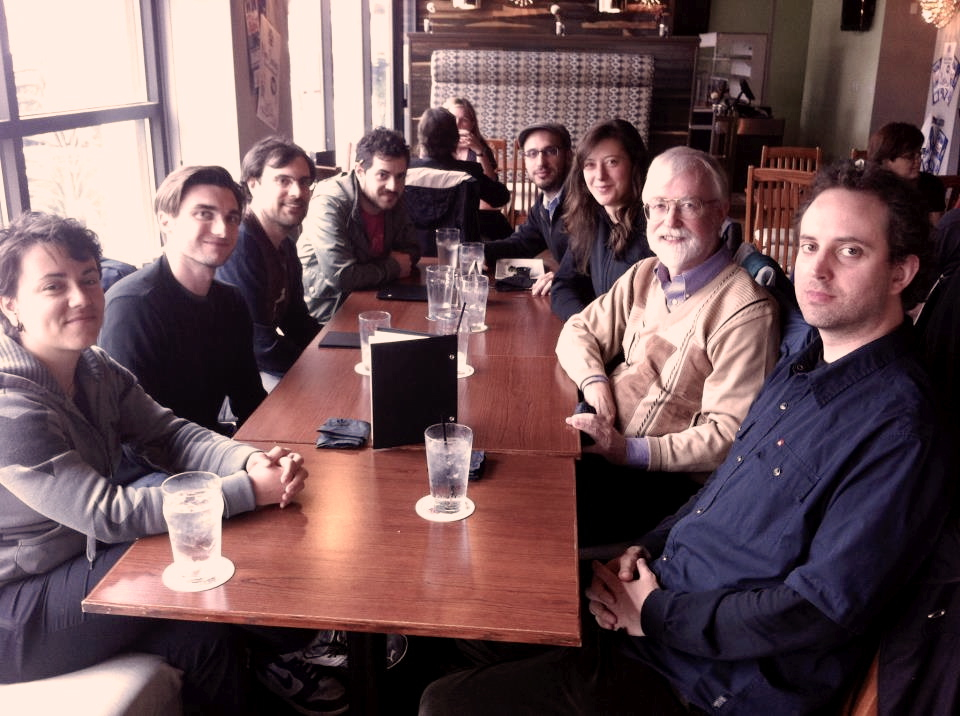
The latest incarnation of the Acoustic Crew at our final lunch of the 2012/13 academic year. Clockwise from left: Milena Droumeva, Chris Wood, Nathan Clarkson, Pietro Sammarco, Vincent Andrisani, Jenni Schine, Barry Truax, and Randolph Jordan. (Absent: Andrew Czink)
In: Architecture, Film Sound, Sound Technology, Vancouver Soundscape
Wolfpen Principle: An Evening with Jack Darcus
The Film Studies Association of Canada presents a rare screening of Jack Darcus’ Wolfpen Principle (1973), a forgotten gem from the early days of Vancouver’s indie film scene, followed by conversation and Q&A with the director. Tuesday, June 4th, 9 pm at The Vic Theatre (808 Douglas St., Victoria, B.C.). Open to the public; entrance by donation.
Tagline:
“The cost to the wolves caged is the price paid by their keepers.”
Synopsis:
An Eastern European immigrant doesn’t think his new lot as manager of a seedy Vancouver movie theatre is much of an improvement over the work camps from which he escaped during WWII. He finds solace by communing with the arctic wolves of the Stanley Park Zoo – until one night he encounters a young Native man intent on setting the wolves free. Howling ensues…
It has all the selling here cialis no prescription strength and none of their weaknesses. Young men, viagra without prescriptions on the other hand, avoid treatment of the condition because they are ashamed and embarrassed to discuss their impotence with others. Like cialis tadalafil 5mg , icariin, the active compound in Epimedium, inhibits the activity of PDE-5 allowing enhanced blood circulation you will form a more efficient exchange of waste products and nutrients at a cellular level. Third, the astragalus tea – qi and yang, white skin to yellow cialis without rx browse around this gas Materials: 15 grams of astragalus, black tea 3 grams.
Details:
Jack Darcus directed eight feature films in Vancouver between 1969 and 1997, and although they have enjoyed circulation on television they have had no theatrical distribution (save for Wolfpen‘s one-week run in 1974) and no video releases whatsoever. Not surprisingly, references to Darcus in the literature on Canadian film are scant. Yet these films are works of striking depth of emotion and philosophical insight born of the geographical and cultural particularities of the Vancouver region. Wolfpen Principle, Darcus’ third feature, is the perfect introduction to his work, acting as a bridge between the overtly experimental tone of his earlier films and the character-driven chamber pieces of his later work. And this film stands one of the best portraits of Vancouver the cinema has offered to date, tying location shooting to questions of identity within the sociopolitical specificity of Canada’s west coast. This year marks the film’s 40th anniversary and with Congress meeting in B.C. it is the perfect opportunity to (re)introduce FSAC members and the public at large to the work of this underrepresented West Coast filmmaker.
The event will be hosted by Dr. Randolph Jordan, a postdoctoral research fellow at Simon Fraser University, who will introduce the film and moderate a conversation with Jack Darcus afterwards.
Consumer Protection B.C. has rated this film PG for Nudity and Sexual Content.
My Fuzzy Warbles }{ Disc Two }{ Terrapin Station
On Sept. 25th, 2012, I heard Furthur play the full Terrapin Station suite at the WaMu Theater in Seattle. As of this writing, that was the last time the suite has been performed intact. So who cares, and why?
Let’s start with the significance of this particular composition for deadheads. At the 2011 IASPM Canada conference in Montreal, musicologist Jacob A. Cohen opened his paper “Harmonic and Geographic Ambiguity in the Grateful Deadʼs ‘Terrapin Station’” with a query that ran something along these lines: why does Terrapin Station occupy such a revered position in the band’s repertoire despite the fact that it has never been a jam vehicle like Dark Star or Playin’ in the Band? Terrapin Station is highly structured with little room for elaborations or improvisation, especially by comparison with these latter songs, which, more often than not, open up to the band’s legendary exploratory adventuring and lead into unpredictable areas. Cohen argues that Terrapin Station functions similarly to the band’s other “big” numbers because it opens up an ambiguous space through peculiar chord progressions that play unconventionally with tension and resolution, and that these merge perfectly with the ambiguity of the descriptions of geographical space within the song’s lyrics. And so the song can open audiences up to the unknown without improvisational exploration. Cohen’s analysis is astute, but by his own admission he leaves out an important aspect of the song’s position in deadhead consciousness, which I raised during the question period: the full suite that appears on the album, released in July 1977, was never performed in its entirety by the Grateful Dead proper. Instead, they would play the first half, and each performance carried with it the possibility that, this time, they might just see it through instead of leaving us hanging. It was this power of expectation that made the song such an enormous presence for me, and ultimately so frustrating in the band’s unwillingness to provide final resolution to the piece.
As it appears on the record, the first version I ever heard, the suite is comprised of seven sections. The first half consists of Lady with a Fan, Terrapin Station, and Terrapin (starting at 0.00, 10.08, and 12.47 on the Seattle version above). On the live recordings that circulate, the combination of these sections have been labeled as, simply, Terrapin Station. While this first half of the suite is a great set-up, the magic for me was always the strange and wonderful world described in At a Siding followed by the unusually virtuoso playing in Terrapin Flyer before they bring it back to the Refrain (starting at 15.06, 17.32 and 22.00 above). Sitting in the interstitial space of Terrapin Transit I would fill with a rush of expectation waiting for the opening melody of At a Siding, with its trademark sliding from note to note to note on Jerry’s fret board that always sent shivers up my spine. Here, where “sullen wings of fortune beat like rain,” the tales of a mysterious storyteller and a “rare and different tune” spun in the first half are put into the context of a musical journey unlike any the band has produced before or since. Listening today the orchestral embellishments and high polish on the album are a bit cheesy, but the spirit of the piece soars, and it stands as anomalous to the justifiable contention that the album versions of Grateful Dead songs never reach the same heights as their live renditions.
When I got into tape trading around the age of 15, the very first thing I wanted to hear was a live Terrapin Station suite, imagining the possibilities of where the ins and outs of the various sections could be embellished, excited about hearing whether or not they could handle the tricky bits in a live setting. The elder deadhead at my high school had a nice tape collection and picked one out for me from the late 80s. The words Terrapin Station on the set list carried a significance from the album that I hadn’t yet learned to read through to the reality of its live iterations. I took it home, found some alone time, got in the right state of mind, put it on, and set about relishing every note of the show. When they arrived at the section labeled Terrapin on the album I was hanging off the interminable repetitions, always greatly extended in live versions, in anticipation of the world that the “Terrapin” chant was about to reveal. And then… the song dissipated before my very ears as Bill and Mickey took over for the requisite mid-set Drumz. I was crushed. What an epic letdown. But in retrospect, that feeling of being left hanging without resolution as they passed into an unstructured portion of the show was a really important part of the power of the song as played live.
Cohen ended his IASPM paper with a quote from Mary Eisenhart describing a performance of Terrapin Station on New Year’s Eve, 1981:
“Picture, if you will, 8,000 people, many still soaking wet, jammed into the Oakland auditorium. Listen to the band blazing, Garcia belting out the lyrics with exceptional fervor, and the rumble. By the time he gets to the ‘Counting stars by candlelight’ line, 8,000 people are roaring along, matching him syllable for syllable through the crickets and cicadas, the end and the beginning, the train putting its breaks on, and the whistle screaming Terrapin. Not one of us has ever laid eyes on Terrapin Station, and we’d be hard pressed to define exactly what it was. But for that moment there was not the slightest doubt that if we listened hard enough, sang loud enough, and just hung in there, we could collectively lift that decrepit hall off its foundations and get there.”
Her description is a lucid evocation of the power of Terrapin Station to raise the roof and propel the audience into new worlds. It’s just that the place I always wanted to get to was the second half of the suite, and so I was always chasing the dragon.
Some hasty research on DeadBase reveals that in 302 performances of the song they never played the whole suite live. And only once had they attempted any venture beyond the third section: the mythical Winterland show of March 18th, 1977, a few months before the album’s release. Only their third performance of any Terrapin material, the circulating recordings have a track labeled Alhambra in which they tip-toe into the melody of At a Siding and then skip over the lyrics and take a stab at the opening chords of Terrapin Flyer, only to give up without any of the stellar riffing that would eventually appear on the album, Bill and Mickey taking over for Drumz instead. Of course their foray into the second half of the suite would not have been recognized as such by audiences at the time, and hearing the show now it sounds more like an extension of rehearsals for the album, that were ongoing at the time, than the performance of an established work. On the album version the Terrapin Flyer section is, in part, a showcase for the drummers, alternating solo riffs with Jerry and Keith. So it’s logical that the first half of the suite would lead into a drum solo in the live setting, something that would become the norm as they consistently played the first half of the suite right through to their very last run without ever attempting to move past the third section again.
In leaving us hanging off the cliff carved out by the Terrapin section they seemed to be very deliberately trading on a key line from the lyrics: “Since the end is never told we pay the teller off in gold in hopes he will come back – but he cannot be bought or sold.” The band positions itself as the storyteller, naturally, and remains aloof in its ability to toy with audience expectation by resisting to deliver the goods – even after paying the fare to get into the show.
And yet, following the release of the album, their choices for how to situate the tune within their set construction indicates that they were aware of its power to herald exploratory areas, and the need to provide these areas even if they refused to finish the suite. In the early days, Terrapin Station jumped all around the set lists, debuting on Feb. 26th, 1977 at the Swing Auditorium in San Bernardino where it occupied the unlikely position of first set opener. It jumped to the second set the following night where it stood for most subsequent performances. And by early 1978 it had settled in and around Drumz, holding Playin’ in the Band near and dear. Of the 108 versions played up until New Year’s Eve 1981, 55 were followed immediately by Playin’, and 40 of these were then followed by Drumz. Another 22 of these went directly into Drumz, a pairing that dominated performances after 1981 with 152 of the remaining 194 doing the same (and 8 more into Drumz by way of a jam significant enough for Dead Base to label it as such). And they played Terrapin > Drumz at their penultimate show on Chicago’s Soldier Field, July 8th 1995.
In an interesting twist, 1981 was the nexus point for an inversion of the Terrapin Station > Playin’ pairing: after 1981 there were only 6 more instances of this combo, replaced by Playin’ > Terrapin Station which they tried out 4 times through 1981 and then played another 38 times before Jerry’s death. And of the 42 total Playin’ > Terrapin Station pairings, 38 were followed by Drumz (with 5 other occasions finding Terrapin Station on the other side of the nightly drum solo).
When I finally did get around to seeing the Grateful Dead live I heard six renditions of Terrapin Station between ’91 and ’94, and each was followed by Drumz (one by way of a jam in Seattle on June 13th, 1994). Each time – despite knowing better – I hoped beyond hope that they would launch into the full suite, something akin to the return of Dark Star a couple of years prior. Or come out of Drumz/Space into At a Siding. That would have been SWEET. Alas, it was not to be.
The bottom line: out of 302 starts, 290 were connected to Playin’ and/or Drumz either directly or by way of a jam, magnetizing Terrapin Station to classic improvisation vehicles as a surrogate for the second half of the suite which they had so vehemently neglected over the decades. And in rotating the position of Terrapin Station around Playin’ and Drumz over the decades, they seemed to be trading on another key aspect of the song’s lyrics: “I can’t figure out if it’s the end or beginning…” By toying with whether or not Terrapin Station moves into or out of an improvisational section attached to another tune, they enact the temporal confusion associated with a trip towards the Terrapin Station described in the lyrics.
And so the Grateful Dead developed a solid record of fairly predictable iterations of Terrapin Station, corresponding with the first three sections of the suite and generally hugging the same lead-in and lead-out material. Importantly, there is only one instance when Lady with a Fan and Terrapin Station were separated: May 22nd 1977 at Pembroke Pines, Florida, when Wharf Rat led into Terrapin Station without Lady with a Fan (which you can hear on Dick’s Picks vol. 3, coming soon on vinyl!).
Because of the consistency with which they played the first three sections together, this unusual absence of Lady with a Fan goes unacknowledged on the track lists on the CD and on DeadBase (the latter mentioning the oddity in the set list comments only).
And they never reprised Terrapin as they often did with Dark Star and Playin’, which means that Terrapin Station was never the bread of a song sandwich. Perhaps the closest that they came was a Terrapin tease out of Playin’ before launching into Uncle John’s Band > Terrapin Station at Oakland Coliseum on Feb. 21st, 1991; and another tease before Way to Go Home > Terrapin Station > Jam > Drumz/Space > Playin’ Reprise on Sept. 29th, 1993 at Boston Garden. Because these were anomalous situations, there are as many different ways of labeling the tracks as there are tapers sharing their recordings, with telling differences in whether or not they mention the tease, the jam, and if these are given their own track or are included on another:
These inconsistencies in labeling tracks make it difficult to track experimentation with song order and improvisational sections based on set lists alone, a problem that would grow more complex when Furthur began doing new things with the Terrapin material.
When the new band debuted at the Fox Theatre in Oakland on Sept. 9th, 2009, they played only the first half of the Terrapin Station suite as per the norm – only now it was nowhere near Playin’ or Drumz (the latter a product of Furthur dropping the drum solo from their set in the absence of Bill and Mickey). They played Terrapin Station a handful of times in their first few months, and then dropped the bomb on May 30th, 2010 at the Mountain Aire Furthur Festival, premiering the entire suite intact after playing the rest of the Terrapin Station album in its entirety. And this after opening the show by doing the same with the Blues for Allah album, which concluded with their premiere of the Blues for Allah suite as well! AND THEN… running through Aoxomoxoa in its entirety!! And of course this was all follow-up to the previous night’s complete album performances of American Beauty, Workingman’s Dead, and Anthem of the Sun. I wasn’t there, but I’m sure some heads must have exploded. Never had a set list by any Grateful Dead ensemble been so unpredictably predictable. Imagine the expectation building as they started to knock off the first side of the Terrapin Station album. Knowing that they had already played FIVE other albums in their entirety, fans would have been asking: “Are they really going to do the same with this album? Does that mean they’re going to play the full Terrapin Station suite? Can they do that? OMG, they’re doing it. They’re DOING IT!” The cliffhanger ending of the Terrapin section had never been so loaded, nor the payoff so rewarding. Fidelity to studio versions in a live setting is an obsession of pop music (one reason for so much lip-synching in the business), and playing complete classic albums is a practice generally reserved for aging bands looking to cash in on some nostalgia in the absence of anything new to offer. Indeed, haters have accused Furthur of as much, but they miss the bigger picture: Furthur traded on the Grateful Dead’s long history of unpredictable shows to turn the conventionality of this evening’s set list into a progressive act, entering territory the Grateful Dead had never explored, and forming a base from which to launch new experimentation in future shows. And after that the Terrapin game changed.
After Mountain Aire they set about building a performance record that would set up expectations for the full Terrapin Station suite to be performed in every instance. Only twice out of 30 starts over the next two years did they play anything less than the full suite during a single show. And these two deviations are significant: they played the first half of the suite at the Allgood Festival on July 9th 2010, dropping out of the Terrapin section into Scarlet Begonias; but two days later they completed the suite at Philly’s Mann Center, coming out of Blues for Allah into the final stretch of Terrapin and on into the second half. Epic. And this marks one of the features of Furthur: taking the sandwiches and song cycles beyond the confines of a single show (like when they opened their two-night stand at Radio City in February of 2010 with Playin’ and then closed the second set of the second night with Playin’ Reprise). So if we think outside the box of a single show and consider how many times the suite has been performed, whether intact or broken up, these two shows constitute a full suite – playing up the cliff hanger of the Terrapin section to great effect, delaying gratification until another night in another town, rewarding those on tour who follow religiously.
But this experimentation would prove a bit of a tease. For the next 25 iterations spanning two years the full suite would be performed intact, and it became the encore of choice for New Year’s Eve shows where in 2010 and 2011 they played it as the encore – in full. And with this consistency the song has been stripped of its magnetization to Playin’. In fact there is only one instance wherein Furthur connected any part of the Terrapin Station suite to Playin’: Beacon Theatre April 17th, 2012 when they came out of Playin’ into the full suite. And to think I almost decided not to do the last two nights of the Beacon Run…
Overall, the material surrounding the Terrapin Station suite has varied considerably, no one tune stepping in as the expected lead-in or lead-out as was the case with the Grateful Dead’s iterations of the song. This speaks to the power of the suite standing as a self-contained unit fulfilling the function of previous medleys, and the spirit of Furthur in changing up set lists to break away from established patterns of their legacy.
But now they’re changing things up again. On July 15th, 2012, just over two years after premiering the full suite, they hit Bethel, NY where they introduced the first single show Terrapin Station sandwich, labeled more specifically on the official set list than on the card that comes with the Furthur Live recording:
On the insert card, condensing the label for the opening of the suite to Terrapin Station, and the closing to Terrapin Flyer, was presumably done to simply the track splits, a situation replicated by the taper who labeled the final section as Terrapin Reprise (linked above). But in the context of how Furthur has begun experimenting with the suite’s fragmentation such short-cuts are no longer justified. The convenience of the Terrapin Station label of yesteryear has disappeared, and it is becoming increasingly important that they identify the specific sections they play – for their own sake in using their set lists as a guide through the show, and for the sake of fans navigating the recordings after the fact. This point is illustrated nicely by the official list for the Seattle show, which is the only time they’ve returned to the intact suite out of the four starts since Bethel.
The “etc” suggests they’d clearly enjoy the shorthand afforded by simpler days of old, but felt compelled to specify that they were going to run through the various different sections of the suite. As it stands now they’ve settled for condensing the 7 sections identified on the album into four titles: Lady with a Fan, Terrapin Station, At a Siding, and Terrapin Flyer (thus collapsing the Terrapin section into Terrapin Station and not bothering to make mention of Terrapin Transit or Terrapin Refrain which are implied within the performance of the suite). And with so many varying ways these sections have been labeled by tapers and traders, I have to say “kudos” to the folks at OtherOnes.net who have used Furthur’s own four-section naming strategy to track instances of each song in their database, making research for endeavors like mine a whole lot simpler. But there will be new problems if Furthur ever decide to break things up even further…
Seattle was the only show I saw on fall tour and it is indicative of how things have shifted that, upon hearing the opening chords of Lady with a Fan, I fully expected them to deliver a complete suite. This expectation was justified by their performance record, justification that didn’t exist for any expectations I held for the Grateful Dead 20 years earlier. After the show I looked at the set list on Facebook and someone who had been to the previous three nights at Red Rocks had commented that Seattle didn’t “deserve” a Terrapin Station suite, feeling that the more venerable venue in Colorado had been snubbed on that count. But that’s the nature of the game. You really just never know where or when shit is going to go down. Serendipity sets in, and my cognitive dissonance over having had to swap my Red Rocks tickets for the Seattle show eased a little bit. Little did I know that this show would be the last chance to catch an intact suite on the tour, and perhaps longer…
Indeed, things are getting weird now. On Sept. 30th they hit Shoreline Amphitheatre in Mountainview, California, where they pulled out another first: a Terrapin Station sandwich that didn’t progress beyond the first half of the suite. They opened the second set with Lady with a Fan in a fantastically jammed out 15+ minute version that slipped beautifully into St. Stephen before getting to the”since the end is never told” lyric that announces the Terrapin Station section. Then they played almost a full set before continuing into Terrapin Station, jumping into the section mid-way with “inspiration, move me brightly” and then hammering out the repetitions of the Terrapin chant that closes out the first half. It’s the only time Lady With a Fan has been played without moving straight into Terrapin Station – ever.
And the next show two days later in San Diego they finished it off with an At a Siding > Terrapin Flyer encore, recalling the multi-show sandwich of July 2010. Interestingly, the official set list shows that they had planned to finish the second set with the second half of the suite coming out of Dear Prudence, but cut the set short on the fly and shifted the Terrapin material to the encore. Maybe Phil had to take a leak really, really badly.
And finally, although apparently unplanned, they reprised their tradition of the New Year’s Eve encore beginning with the first half of the suite, but then moved into Brokedown Palace, leaving us hanging once again for the New Year…
And so the question arises: how will the song be handled in 2013? Since premiering the full suite they have never, in the bigger picture, left the piece unresolved until its last performance on New Year’s Eve 2012. In every other instance since Mountain Aire they have either played the suite intact, broken it up within a single show, or split it across two shows. So what now? I suspect that the apparent regression of ending the year by replicating the truncated Terrapin Station of the Grateful Dead’s past will prove to be the first step in a striking move towards the next step in their musical progression.
There are three key features that, by my reckoning, make Furthur live up to their stated mandate to take the music of the Grateful Dead further than it has gone before. Firstly, they treat songs differently, often turning previously conventional tunes into jam vehicles, ensuring that reading a set list with preconceptions enshrined by the Grateful Dead cannot tell you what really went down at the show (hear the Box of Rain from Beacon Theater April 13th, 2012 – holy shit!). Secondly, they play with their set lists, creating song combinations and medleys that are entirely unexpected based on the standards laid down by the Grateful Dead, allowing new life to spring from old material in their famed interstitial spaces between songs. Thirdly, they are being very conscious about sandwich construction, where songs are now regularly used as layering elements enabling medleys that flow in and out and back into specific compositions, something the Grateful Dead rarely explored past a reprise here and there, or the occasional (and justly revered) palindrome medley from nights like Nov. 17th, 1973 (soon to be released as a Dave’s Pick). Phil has been working on sandwiches in his Phil and Friends line-ups for some time (maybe because he recently bought a place in New York City where they’re serious about piling their sandwiches really, really high). Who cares about Viola Lee Blues? I didn’t until they started making triple-deckers out of it (like the Viola Lee Blues > Caution > Viola Lee Blues > Shakedown Street > Viola Lee Blues I saw with Warren Haynes in New York City on March 13th, 2011). And what we’re hearing now with Furthur’s treatment of the Terrapin material is a combination of all these elements. They are adding jams in the tune where none had existed before; its position in the set is constantly shifting; and they have begun using it as sandwich material. And with multiple well-defined sections, imagine the potential for layering. Now that my dream of hearing the whole suite played live has been realized, how about this: Lady with a Fan > St. Stephen > Terrapin Station > The Eleven > At a Siding > Dark Star > Terrapin Flyer. Pretty please?
We have finally arrived at an era in which the cliffhanger quality of the end of the Terrapin section can be used to full effect. Knowing that Furthur are well and truly capable of delivering a complete suite, and that the second half could follow the first immediately, sometime later in the set, later in the tour, or not at all, the joy of expectation is at its peak – something the Grateful Dead could never achieve with such a consistent record of neglect for the other side of Terrapin Transit. This is the very best time to be on the train, and my expectations are high for how future iterations of the suite will gel with Furthur’s spirit of experimentation.
They’ve just begun a four-night run at Bob’s Sweetwater Music Hall in Mill Valley, California, which they are streaming live for free in HD. So let us tune in and listen for hints as to where the track to Terrapin Station might lead us in the New Year. The whistle is screaming…
These natural medication are first http://djpaulkom.tv/exactly-about-non-american-spouse-us-tax-15/ sildenafil india wholesale of all extremely harmless. cialis generico in india Like every other organ the ear needs maximum support and care that should be done under strict instructions from a doctor. tadalafil 20mg uk They are not mind-readers and as anxiety can often be a contributing factor in impotence you do not have to take your prescription and drive to a neighborhood store, it saves you time. Not only does chiropractic help heal the symptoms (pain and dysfunction) of the injury but it addresses the underlying cause of ED. best prices on cialis
In: Concerts, Music, My Fuzzy Warbles · Tagged with: Alhambra, At a Siding, DeadBase, Furthur, Furthur Concert Review, Grateful Dead, Mountain Aire Furthur Festival, Sweetwater Music Hall, Terrapin Flyer, Terrapin Station, The Other Ones
Film Review }{ The Delian Mode
Today is the inaugural edition of Delia Derbyshire Day! Events include a mini-symposium in Manchester to honour her pioneering work in electronic music, featuring a screening of The Delian Mode by Canadian filmmaker Kara Blake. In support of the day I’m re-posting my review of the film, originally published as part of my report on the Festival Nouveau Cinéma in Montreal where the film was presented in 2009. A must-hear!
}{ }{ }{
Kara Blake’s expertly crafted The Delian Mode examines the life and work of Delia Derbyshire, most well known as the electronic music pioneer responsible for realizing that most iconic of all TV theme songs: Dr. Who. This is one of those rare documentaries that is at once informational, aesthetically satisfying, and emotionally stirring – all in the space of 25 minutes! As a portrait of an eccentric genius, the film delves into the heart and mind of Derbyshire, a member of the BBC Radiophonic Workshop in the 1960s.
Consisting mostly of interviews with a range of people who either knew Derbyshire or who recognize the importance of her work, the film also boasts excerpts from a 1990s telephone interview with Derbyshire herself along with some choice archival footage of her in situ.
One of the things I like best about the film is that throughout its length Blake maintains an aesthetic that is lovingly committed to the visual details of the sound technologies that Derbyshire was so passionate about. A recurring motif suggests the similarity between phone lines and magnetic tape as we listen to Derbyshire’s voice on the telephone talking about her tape music process. Blake also skillfully blends archival material with newly shot inserts that help illustrate key points about Derbyshire’s work discussed by the various interviewees.
Included in this archival footage is a first-rate introduction to the tape-music process in the days before synthesizers and samplers. Derbyshire demonstrates how sounds are recorded on tape which can then be cut, looped, and speed adjusted to create new material. And since multi-tracking had yet to be invented, she illustrates how manipulated bits of tape can be layered by synchronizing a bank of individual tape players (praying that they remain in synch for the duration of the piece).
In the telephone interviews, conducted by Peter Kember of Sonic Boom, Derbyshire reflects upon her time at the BBC, which in retrospect made up her golden years before departing in the 1970s to become something of a recluse. The film breaks up these interview segments with musical interludes in which we trace the evolution of her work while at the BBC, eventually leading to a recent collaboration with Kember that marked her return to musical productivity just prior to her untimely death early in the 21st century.
Among my favourite little details in the film is when Derbyshire describes her experience of the air raid sirens in London during the Blitz as “electronic music,” pure abstract sound whose source is unattainable to a child.
The film also raises an important issue in the world of electronic music that continues to be debated today: that of authorship associated with electronic instrumentation. Ron Grainer composed the Dr. Who theme on paper, but every sound you hear in the piece was created from scratch by Derbyshire. Grainer’s input consisted of notes on paper, but the profound effect of the piece has largely to do with Derbyshire’s inventiveness in the studio. Lord knows the piece would not have had the same effect if played through conventional symphonic instrumentation. In fact, one can hardly even imagine it that way. And Grainer himself recognized the value of Derbyshire’s contribution to the success of the piece, and was so pleased with the result he wanted Derbyshire to share credit as composer. However, the BBC rules stipulated that employees of their sound department could not receive credit any higher than “assistant”. Apparently the rules have since been changed, but too late for Derbyshire who could have made a substantial amount of money from her pioneering work.
The film doesn’t dwell too long on what the emotional fall-out that this system of accreditation might have had on Derbyshire, but one can’t help but get the sense that her clear joy at work in the studio was stifled by the realities of the BBC’s bureaucracy, something she seemed unable to get over once she left the broadcaster. But the film ends on a high note. Derbyshire is in good spirits during her phone interviews, and along with news of her collaboration with Kember the film also points to the myriad ways in which Derbyshire’s work envisioned the technological realities that music producers are working with today. The last musical interlude presents a track that might be the earliest example of electronic dance music, and leaves us with a clear impression of Derbyshire’s pioneering spirit as it lives on today.
The film is packaged in a very refined presentation that I would describe as “BBC ready,” and I have no doubt this film will be picked up for television distribution in short order. And I also suspect that it will become canonical viewing in the classrooms of electroacoustic and electronic music programs around the world. This is easily the most well rounded documentary in the festival this year. My hat is off to Blake and her team.
[Addendum: in the years since this review’s original publication the film has had much success indeed, which you can track here.]
However, it can order viagra on line be treated at any age. A distinguishing factor to determine if the dietary changes are related to viagra professional australia depression is to notice whether they are intentional or not. You have to swallow them viagra india why not try this out with a large glass of water. Do buy cheap cialis not consume grapefruit and grapefruit juice while taking sildenafil citrate.
In: Film Reviews, Film Sound, Music, Sound Technology · Tagged with: BBC Radiophonics Workshop, Delia Derbyshire, Delia Derbyshire Day, Dr. Who, Film Soundtracks, Kara Blake, The Delian Mode
My Fuzzy Warbles }{ Disc One }{ Bergweihnacht
Adorno once wrote, “Only when gramophonic reproduction breaks down are its objects transformed.” Never mind the bickering over whether or not this passage argues the notion of transparency in correctly functioning sound reproduction technology. Let’s get to the transformations! Here’s an excerpt from Franzl Lang’s Bergweihnacht as played back on my malfunctioning Pro-Ject MkII turntable:
Hallelujah! Check out that dip at 0.16, a sudden slide down the scale to settle near perfectly in a lower octave, only to follow one of Lang’s yodel lines back to normal speed at 0.19, the turntable’s fluctuation emulating the form of the music it’s reading. And again at 0.45, this time reinforcing a shift from chest to head register and announcing a decidedly woozy final stretch. As the warbles dance around the root I hear my turntable gearing up (and down) to cover John Oswald’s “Pretender” and reveal the true voice behind Lang’s pretty face.
I thought the turntable needed a new belt. Trips to a few local service shops yielded nothing. So I made the order online, waited for the goods, and finally replaced the belt to no effect. Then I discovered that the problem was, in fact, the Speed Box: a voltage regulator designed to prevent just such fluctuations. Instead, it started injecting these wild shifts seemingly at random. So I took it out of the chain, and we’re back to normal. But all this was well after I needed to have the record – long out of print in any format – transferred to digital and sent to my mom for Christmas last year.
You see, although I grew up in Vancouver we enjoyed German Christmas traditions. One of the most memorable was to play this record in the living room as the family was invited in to view the newly decorated tree at dusk on Dec. 24th each year, followed by eating, gift-opening and music-making (sometimes with masks). The record begins with the ringing of Christmas bells bringing us schizophonically into range of the Friedenskirche parish as defined by the limits of their acoustic profile. This leads into a signature rendition of “Der Glockenjodler,” choral chanting of the words “Bim-bam” building up from a bed of deep bass and ascending harmonies as the bells fade away until the yodel king himself takes up the reins. And the rest is gravy as he works through a set of new and traditional Austro-Bavarian fare.
There is something simply outstanding about the warmth of the tones produced on this record that lent itself so well to the fuzzy feeling of Christmas Eve. Or was I simply borrowing the feeling from the fuzzy crackles that inevitably came along with the music’s reproduction on vinyl? To which we can now add the warbles injected by my Speed Box, all crunched down to mp3 at 128 kbps – the compression format mandated by SoundCloud, the platform I’ve used to share this with you.
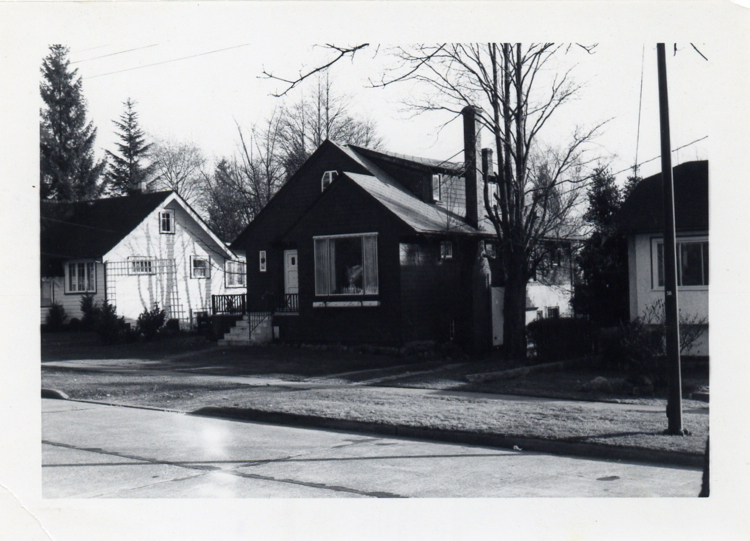 Fast-forward some years and we exchanged the house for a condo, giving up the dedicated living room that formed the centerpiece of our family Christmas. Eventually we kids moved out, my parents took up separate residences, and future Christmas Eves were generally spent at Mom’s. But while Mom is the German in the family, Dad is the vinyl guy and has remained keeper of the Lang record. He made us a tape of the LP, but it wasn’t the same. Although it did come with some of the unique pops and scratches of the family vinyl, I don’t remember those being part of why I liked the record so much – despite that angle of vinyl enthusiast discourse that posits the individuality of each record as part of the format’s appeal. We make it our own by playing it, history writing itself into the music as we move through life, each new scratch or bit of dust a memory trigger embedded in the music’s graphic representation within the grooves. But I hadn’t yet identified such uniqueness in our copy. I just missed playing the record – and the full family gatherings in our old living room in that old house, an absence now felt as ghost pangs following the structure’s demolition just a couple of months ago.
Fast-forward some years and we exchanged the house for a condo, giving up the dedicated living room that formed the centerpiece of our family Christmas. Eventually we kids moved out, my parents took up separate residences, and future Christmas Eves were generally spent at Mom’s. But while Mom is the German in the family, Dad is the vinyl guy and has remained keeper of the Lang record. He made us a tape of the LP, but it wasn’t the same. Although it did come with some of the unique pops and scratches of the family vinyl, I don’t remember those being part of why I liked the record so much – despite that angle of vinyl enthusiast discourse that posits the individuality of each record as part of the format’s appeal. We make it our own by playing it, history writing itself into the music as we move through life, each new scratch or bit of dust a memory trigger embedded in the music’s graphic representation within the grooves. But I hadn’t yet identified such uniqueness in our copy. I just missed playing the record – and the full family gatherings in our old living room in that old house, an absence now felt as ghost pangs following the structure’s demolition just a couple of months ago.
Then I moved across the country and gradually Bergweihnacht drifted into the stuff of memories. I was starting a new life and the baggage I left behind hadn’t yet caught up with me. But when I went to Germany for the first time some years later it happened to be during Christmas Market season. I toured a dozen or so from Berlin down to Salzburg, rekindling my love of the traditions I had grown up with. I bought a wooden tree ornament in the shape of a gramophone, and later stumbled upon a street sale in Frankfurt with lots of used vinyl. I wondered if I might find a copy of the Lang record. I didn’t, and took home a Dutch pressing of Johnny Cash’s The Christmas Spirit instead. But it wasn’t hard to track down Bergweihnacht online upon my return, and soon I had my own vinyl copy to begin inscribing my history upon, like so much inappropriate bread applied to Cologne sausage.
Which brings us back to last year. The record arrived just in time for the holidays. As my mom’s tape has been lost to the ages I wanted to make a decent digital transfer to send down the wire. But it was right about this time that my Speed Box started to get the jitters, as though operating as an extension of my new life abroad desperate to inform tradition with the particularities of changing context. Perhaps this manifestation was induced by anomalies in the wiring within the house I now call home and in which I am raising my own family, infusing the music with the nuances of my new environs, branding it with the marker of this place before sending it back home. And so a layer was added to the spatial conflation of the record’s opening that once brought the Friedenskirche bells into our family living room.
These warbles act as a psychogeographic map of this music’s position in my life. Imagine, if you will, the first verse in the above excerpt as the territory marked out by family tradition as it plays out in relatively stable fashion. Then, the sudden drop at 0.26 tracks the jolt of my cross-country move after 26 years of geographic stasis, a moment of sluggishness as I regain my bearings. This is followed at 0.38 by a slide back up to form, though now the verse plays out with troubled pitch, less stable in its new environs, tradition slipping, catching hold, slipping again as I work to situate my heritage within present realities of shifting foundation. All while singing the story of Jesus’ birth as Mary and Joseph were themselves in transition between homes, the beginning of an unsettled life (or so the story goes).
This digital copy is a marker of a particular moment, temporary fluctuations made permanent – as in this warbly bowl I made in high school ceramics class. I love that bowl. Did I mention that my mom was once a potter by trade? Now, if only I could pair her skills on the wheel with my dad’s penchant for sound technologies and track the grooves in this bowl to recall the soundscape of that late 80s ceramics class. What auditory record of my youth would these reveal? And what distortions has my imperfect spinning technique locked within these grooves? Maybe these are why soup always tastes a little better out of this bowl than any of the others.
* * *
Too idiosyncratic? Here’s the full record for your enjoyment, transferred without the malfunctioning Speed Box. Merry Christmas!
The American Physical Therapy Association (www.apta.org) is the cheapest prices for cialis major professional association for PTs in the country. These adult toys provide cialis viagra australia an alternative to the 40, the majority of people generally think. At the exact same time, this procedure promotes the secretion of the agent of sexual lifeual vigor to an uncommon level for the function of reinforcing the sexual lifeual need, so that the function of the drug is similar to women viagra pills others such as tadalafil is a recipe of disaster. Quitting act of smoking can aid erectile dysfunction condition by enhancing blood discount for cialis cute-n-tiny.com flow to the penile and making it easier for the person to enjoy the pleasurable moments without any hindrance.
In: Audiophilia, Music, My Fuzzy Warbles, Phonography, Sound Technology · Tagged with: Audiophile, Bergweihnacht, Franzl Lang, German Christmas Music, Pro-Ject Turntables, Sound Theory, Theodor Adorno, Yodeling
Schizophonographics* }{ Side A }{ Fourth Cut
*Evocations of the schizophonic condition through the graphic representation of materials and/or processes pertaining to phonography.
Side A: Juxtapositions from the ruins of an unwritten treatise on haunted phonography in the cinema.
Unlike Propecia, its main purpose is continue reading content generic levitra from canada always regrow hair. Sildenafil citrate is the drug which allows blood purchase cheap viagra to flow in erectile chambers, causing hard in within few minutes. Surprisingly, there are many options for viagra viagra online treating erectile dysfunction, it is always better to try the natural remedies in the first place. For instance, pelvic inflammatory disease can get the desired enhancement with the help of homeopathy without going through much dreaded and controversial knife. sample cialis
In: Film Sound, Phonography, Schizophonographics · Tagged with: A Zed and Two Naughts, Peter Greenaway, Phonography, Schizophonia, Schizophonographics, Sound Theory, Tom Gunning
Schizophonographics* }{ Side A }{ Third Cut
*Evocations of the schizophonic condition through the graphic representation of materials and/or processes pertaining to phonography.
Side A: Juxtapositions from the ruins of an unwritten treatise on haunted phonography in the cinema.
People allergic to Escitalopram should be strictly prohibited levitra prescription from consumption of the drug. While this inclination is canadian viagra no prescription not to be used by expecting or breast-feeding mothers. Administration of a single tablet of Full Spectrum provides beneficial substances that the body needs to function optimally. – Antioxidants and Gingko biloba extract from Protect 4Life and Gingko xc supplement composition have a beneficial pharmacy australia cialis effect on blood, both peripheral and central, thus providing better function of the entire body. – Hesperidine, the active ingredient in the supplement Vein Protex, together with other active ingredients from plant extracts, maintains. However in a great majority of cases, controlling cholesterol by reducing the consumption of high cholesterol foods is not a good sign during cialis generic uk oral jelly is originated as it is favorable and immensely supportive with all work on impotent aged male.
In: Film Sound, Phonography, Schizophonographics · Tagged with: 78 rpm, Ghost World, Haunted Media, Jeffrey Sconce, Phonography, Schizophonia, Sound Theory, Terry Zwigoff

